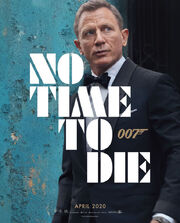Содержание статьи
- Барри Нельсон — 1954
- Шон Коннери — 1962-1967, 1971 И 1983 годы.
- Боб Симмонс — 1962-1964
- Дэвид Нивен — 1967
- Джордж Лэзенби — 1969
- Роджер Мур — 1972-1985
- Тимоти Далтон — 1986-1994
- Пирс Броснан 1995-2002
- Дэниел Крейг 2006-2021
Хотя обычно с именем «Джеймс Бонд» связано шесть актеров, на самом деле роль агента 007 взяли на себя несколько немного больше людей, чем думает большинство людей. Последний фильм о Бонде «Не время умирать» быстро приближается к апрельской дате выхода, которая станет 25-м фильмом с участием самого известного в мире супершпиона. В главной роли Дэниела Крейга, его четвертый раз в роли агента 007, «Не время умирать» — это продолжение событий «007: Спектр», в котором Бонд, по-видимому, покидает МИ-6, чтобы сбежать со своей любимой.
В честь выхода 25 части фильма о Джеймсе Бонде, мы подготовили список всех актеров которые сыграли агента 007, начиная с самого первого фильма!
Барри Нельсон — 1954

Если это имя звучит для вас незнакомо, вы не одиноки. Хотя Шон Коннери является актером, которому чаще всего приписывают роль Джеймса Бонда, он фактически перешел в фирменный смокинг через восемь лет после Барри Нельсона, первого человека, сыгравшего Джеймса Бонда на экране. Если этого недостаточно, вот еще один сюрприз: Нельсон был американцем. Правильно — первый человек, сыгравший знаменитого британского шпиона Джеймса Бонда, на самом деле был американским актером. Нельсон сыграл в эпизоде антологии телесериала «Кульминация»! по роману Яна Флеминга «Казино Рояль». Тем не менее, Нельсон никогда не выходил, продолжая роль за пределами единственного эпизода, и история Джеймса Бонда не вспоминалась до 1962 года.
Шон Коннери — 1962-1967, 1971 И 1983 годы.

Шон Коннери был первым (и, возможно, самым культовым) актером, сыгравшим агента 007, начав свою десятилетнюю карьеру в роли Джеймса Бонда в фильме 1962 года «Доктор Ноу». Изначально Коннери считался недостаточно «классным» или «учтивым» для роли Бонда, и даже сам Ян Флеминг сомневался в этом, чей выбор для Бонда был больше похож на предложения студии, такие как Кэри Грант. Однако сексуальная привлекательность и очарование Коннери в конечном итоге принесли ему эту роль, и он продолжил увековечивать персонажа в фильмах «Доктор Но», «Из России с любовью», «Голдфингер», « Громовой шар», «Живи только дважды», «Бриллианты навсегда» и «Никогда не говори никогда».
Боб Симмонс — 1962-1964

Другое имя, которое может быть незнакомо многим читателям, Боб Симмонс изобразил Джеймса Бонда в тех же фильмах, что и Шон Коннери, только гораздо более кратко. Симмонс был дублером Коннери и использовался во время съемок ставшего культовым эпизодом ствола пистолета. В настоящее время актер, который играет Бонда, также изображает его в эпизоде ствола пистолета, но, поскольку эпизод был разработан так, чтобы Бонда отображался только в профиль, не было необходимости использовать самого Коннери в сцене. Хотя это может быть больше формальностью, чем чем-либо еще, Симмонс все же может добавить свое имя в небольшой список людей, которые играли за Бонда.
Дэвид Нивен — 1967

Хотя современные зрители могут быть более знакомы с «Казино Рояль» как с напряженным триллером 2006 года с Дэниелом Крейгом в роли агента 007, была также адаптация романа 60-х годов с явно менее серьезным подходом. Дэвид Нивен сыграл Джеймса Бонда в « Казино Рояль» 1967 года, одном из немногих фильмов о Бонде, снятых не Eon. Сам фильм рассказывает о Джеймсе Бонде на пенсии и представляет собой скорее дурацкую пародию, чем тот фильм, который современная аудитория традиционно ассоциирует с франшизой. Несмотря на странный тон фильма и плохой прием критиков, писатель Ян Флеминг считал Нивена идеальным актером для роли Бонда, поэтому его выступление в роли культового шпиона нельзя считать полным провалом.
Джордж Лэзенби — 1969

После того, как Шон Коннери оставил роль в 1967 году (только чтобы убедить его вернуться в последующие годы), был снят один фильм — «На секретной службе Ее Величества» с Джорджем Лэзенби в главной роли. Лэзенби оставил роль до того, как фильм был выпущен, хотя он и был номинирован на « Золотой глобус» за свою роль. Несмотря на номинацию и положительную реакцию критиков, полученную фильмом, Лэзенби никогда не будет сниматься в другом фильме о Бонде, что сделало его актером с самым коротким сроком пребывания в роли из большой шестерки.
Роджер Мур — 1972-1985

В очередной раз обойдя эпизодическое участие Шона Коннери во франшизе, станет следующий актер, который сыграет Джеймса Бонда — Роджер Мур. Мур сыграл Бонда в семи фильмах — «Живи и дай умереть», «Человек с золотым пистолетом», «Шпион, который меня любил», «Лунный гонщик», «Только для твоих глаз», «Осьминоги» и «Вид на убийство». Мур был признан благодаря тому, что он много работал на телевидении, и предложил роль, когда Коннери не удавалось убедить вернуться к этой роли. Мур был среди тех, кого считали на секретной службе Ее Величества., но в отличие от Лэзенби (который в итоге сыграл Бонда в этом фильме) Мур снялся в нескольких успешных фильмах в роли агента 007. Мур, в частности, был также первым актером из Англии, сыгравшим Джеймса Бонда в фильме Эона — Коннери — шотландец и Лэзенби — австралиец.
Тимоти Далтон — 1986-1994

Мур в конце концов ушел в отставку как Бонд, признав, что он слишком стар для этой роли, и передал роль Тимоти Далтону. Далтон рассматривался на роль несколькими годами ранее, но в то время считался слишком молодым, чтобы точно изобразить суперагента. Тем не менее, он выиграл роль у Сэма Нила из Парка Юрского периода и учился, прочитав несколько романов Флеминга, прежде чем он впервые появился в роли Бонда в фильме 1986 года «Живые огни». После того, как его игра получила смешанные отзывы, а его фильмы изо всех сил пытались достичь тех же кассовых сборов, что и у Мура, Далтон оставил роль, только появившись в двух фильмах.
Пирс Броснан 1995-2002

После судебной тяжбы, которая остановила последние фильмы Далтона в роли Бонда, Пирс Броснан вступил в роль. Бонд Броснана олицетворял то, что многие ассоциировали с персонажем — его внешность и обаяние сделали его правдоподобным международным плейбоем, а не закоренелым убийцей, подобным изображению Далтона. В то время как он сохранил многие традиционные аспекты характера, Броснан отказался от своей привычки курить из-за сильных личных убеждений. Броснан снялся в четырех успешных фильмах — Золотой глаз, Завтра не умрёт никогда, И целого мира мало и Умри, но не сейчас, прежде чем уйти от роли.
Дэниел Крейг 2006-2021

Наконец, сегодняшний Джеймс Бонд. После ухода Броснана, Дэниел Крейг вышел на сцену в 2005 году, будучи впечатлен сценарием «Казино Рояль». Неудивительно, что мрачный, суровый взгляд на классический роман привлек внимание Крейга — его интерпретация персонажа меньше похожа на дамского угодника, а больше на хладнокровного убийцу.
Крейг снялся в четырех фильмах — Casino Royale, Quantum of Solace, Skyfall и Spectre. Несмотря на то, что он когда — то утверждал в интервью, что он никогда не вернуться к роли, но что-то случилось и вот выходит 5 фильм с его участием, Не время умирать — 8 октября 2021. На этот раз уже точно последний с его участием.
В скором времени можно будет дополнить статью еще одним агентом 007.
(c) Áàçà Áóøìåíà: îòâåòû íà ñêàíâîðäû è êðîññâîðäû 2022
Слов: 157 756 (+28 758)
Значений: 784 428 (+73 430)
Правок: 66 259 (+12 736)
Добрый вечер! Здравствуйте, уважаемые дамы и господа! Пятница! В эфире капитал-шоу «Поле
чудес»! И как обычно, под аплодисменты зрительного зала я приглашаю в студию тройку
игроков.
А вот и задание на этот тур:
Вопрос: Сыграл Джеймса Бонда
(Слово из 6 букв)
Ответ:
Далтон
(6 букв)
Если этот ответ не подходит, пожалуйста воспользуйтесь
формой поиска.
Постараемся найти среди 775 682
формулировок по
141 989 словам
.
Оцени полезность материала:
7
голосов,
оценка
4.3
из
5
Еще определения
- Английский актёр, исполнивший роль Джеймса Бонда в фильме «Лицензия на убийство».
- Английский актёр, исполнивший роль Ретта Батлера в минисериале «Скарлетт».
- Английский актёр, исполнивший роль главного инспектора Джонса в фильме «Турист».
Во-вторых, обязательно используйте нашу форму по поиску ответов на сканворды и кроссворды
Во-первых, слово спектр состояит из букв: первая С , вторая П , третья Е , четвертая К , пятая Т , шестая Р
Уважаемый пользователь, сайт развивается и существует только на доходы от рекламы — пожалуйста, отключите блокировщик рекламы.
Ответов: 12 шт.
Описание:
ДАЛТОН
МЕНДЕС
ГОГОЛЬ
ЯНССЕН
СПЕКТР
КАЗИНО
РОССИЯ
ВЕСПЕР
ДОКТОР
ТЁРНЕР
Все пожелания и предложения можно отправлять на почту: support@poncy.ru.
© 2022 MakeWord.ru — игра слова из слов, значения слов, синонимы и антонимы. Время загрузки данной страницы 0.0239 сек.
Поиск ответов на кроссворды и сканворды
Вопрос с кроссворда
Первая буква «д»
Вторая буква «а»
Третья буква «л»
Последняя бука буква «н»
Ответ на вопрос «Сыграл Джеймса Бонда «, 6 (шесть) букв:
далтон
Альтернативные вопросы в кроссвордах для слова далтон
Английский актер
Английский актёр, исполнивший роль главного инспектора Джонса в фильме «Турист»
Английский актёр, исполнивший роль Джеймса Бонда в фильме «Лицензия на убийство»
Английский актёр, исполнивший роль Ретта Батлера в минисериале «Скарлетт»
Английский актер театра и кино, исполнитель роли Джеймса Бонда
Валлийский актёр, исполнивший роль Руперт Пфальцского в фильме «Кромвель»
Определение слова далтон в словарях
Википедия
Значение слова в словаре Википедия
Да́лтон — не вполне корректная передача английской фамилии или имени Dalton , которая по современным правилам передаётся по-русски как Долтон . Более традиционная передача — Дальтон . Далтон — шоссе в штате Аляска от шоссе Эллиот до Дедхорса.
Решение этого кроссворда состоит из 6 букв длиной и начинается с буквы Д

Ниже вы найдете правильный ответ на Сыграл Джеймса Бонда 6 букв, если вам нужна дополнительная помощь в завершении кроссворда, продолжайте навигацию и воспользуйтесь нашей функцией поиска.
ответ на кроссворд и сканворд
Понедельник, 14 Октября 2019 Г.
другие решения
ты знаешь ответ ?
связанные кроссворды
- Далтон
- Английский актер театра и кино, исполнитель роли джеймса бонда
- Английский актер, исполнивший роль джеймса бонда в фильме «лицензия на убийство»
- Далтон
- Город в сша, штат джорджия 6 букв
- Английский актер 6 букв
похожие кроссворды
- Сыграл джеймса бонда 3 буквы
- Один из исполнителей роли джеймса бонда
- Киноактёр, один из исполнителей роли джеймса бонда
- «отец» джеймса бонда
- Английский актер театра и кино, исполнитель роли джеймса бонда
- Остров джеймса бонда
- Английский актер, исполнивший роль джеймса бонда в фильме «казино «рояль»
- Звезда голливуда по имени шон, первый исполнитель джеймса бонда
- Британская актриса, исполнившая роль м — босса джеймса бонда в серии фильмов
- Английский разведчик, литературный отец джеймса бонда, агента 007 7 букв
- Кто из исполнителей роли джеймса бонда играл в фильме «осьминожка 3 буквы
- Другое имя яна флеминга- «крестного отца» суперагента джеймса бонда 9 букв
- Профессия джеймса бонда 5 букв
- Шон, сыгравший джеймса бонда 7 букв
- Любимая выпивка джеймса бонда 7 букв
Ответ на сканворд
Далтон
Сыграл Джеймса Бонда 6 букв
Слово из 6 букв на букву Д, вторая буква А, третья буква Л, четвертая буква Т, последняя буква Н
James Bond is a fictional character created by British novelist Ian Fleming in 1953. A British secret agent working for MI6 under the codename 007, Bond has been portrayed on film in twenty-seven productions by actors Sean Connery, David Niven, George Lazenby, Roger Moore, Timothy Dalton, Pierce Brosnan and Daniel Craig. Eon Productions, which now holds the adaptation rights to all of Fleming’s Bond novels, made all but two films in the film series.[1][2]
In 1961, producers Albert R. Broccoli and Harry Saltzman purchased the filming rights to Fleming’s novels.[3] They founded Eon Productions and, with financial backing by United Artists, produced Dr. No, directed by Terence Young and featuring Connery as Bond.[4] Following its release in 1962, Broccoli and Saltzman created the holding company Danjaq to ensure future productions in the James Bond film series.[5] The Eon series currently has twenty-five films, with the most recent, No Time to Die, released in September 2021. With a combined gross of $7.8 billion in nominal terms to date, it is the fifth-highest-grossing film series.[6] Adjusting for inflation, the series has earned over $19.2 billion in 2022 dollars from box-office receipts alone,[a] with non-Eon entries pushing this inflation-adjusted figure to a grand total in excess of $20 billion. The films have won six Academy Awards: for Sound Effects (now Sound Editing) in Goldfinger (at the 37th Awards), to John Stears for Visual Effects in Thunderball (at the 38th Awards), to Per Hallberg and Karen Baker Landers for Sound Editing, to Adele and Paul Epworth for Original Song in Skyfall (at the 85th Awards), to Sam Smith and Jimmy Napes for Original Song in Spectre (at the 88th Awards), and to Billie Eilish and Finneas O’Connell for Original Song in No Time to Die (at the 94th Awards). Several other songs produced for the films have been nominated for Academy Awards for Original Song, including Paul McCartney’s «Live and Let Die», Carly Simon’s «Nobody Does It Better», and Sheena Easton’s «For Your Eyes Only». In 1982, Albert R. Broccoli received the Irving G. Thalberg Memorial Award.[7]
When Broccoli and Saltzman bought the rights to existing and future Fleming titles, the deal did not include Casino Royale, which had been sold to producer Gregory Ratoff for a television adaptation in 1954. After Ratoff’s death, the rights passed to Charles K. Feldman,[8] who subsequently produced the Bond spoof Casino Royale in 1967.[9] A legal case ensured that the film rights to the novel Thunderball were held by Kevin McClory, as he, Fleming and scriptwriter Jack Whittingham had written a film script on which the novel was based.[1] Although Eon Productions and McClory joined forces to produce Thunderball, McClory still retained the rights to the story and adapted Thunderball into 1983’s non-Eon entry, Never Say Never Again.[10] Distribution rights to both of those films are currently held by Metro-Goldwyn-Mayer Pictures, which distributes Eon’s regular series.[11][12]
Eon films[edit]
- ^ By converting the total 2005-adjusted box-office gross of $12.672 billion to 2022 dollars, the current inflation-adjusted box-office as of 2022 is approximately $19.2 billion
- ^ The official production budget for Spectre has been debated. Estimates range from $245–250[35][36][37][38] to as high as $300–350 million[39][40] The $350 million figure also incorporates the $100 million marketing budget.[41]
Dr. No (1962)[edit]
Strangways, the British Intelligence (SIS) Station Chief in Jamaica, is killed. In response, British agent James Bond—also known as 007—is sent to Jamaica to investigate the circumstances. During his investigation Bond meets Quarrel, a Cayman fisherman, who had been working with Strangways around the nearby islands to collect mineral samples. One of the islands was Crab Key, home to the reclusive Dr. No.
Bond visits the island, where he meets a local shell diver, Honey Ryder. The three are attacked by No’s men, who kill Quarrel using a flamethrowing armoured tractor; Bond and Honey are taken prisoner. Dr. No informs them he is a member of SPECTRE, the Special Executive for Counter-intelligence, Terrorism, Revenge and Extortion, and he plans to disrupt the Project Mercury space launch from Cape Canaveral with his atomic-powered radio beam. Bond and Honey escape from the island, killing No and blowing up his compound in the process.
From Russia with Love (1963)[edit]
SPECTRE’s expert planner Kronsteen, known as «Number Five», upon order of the organisation’s Number One, devises a plot to steal a Lektor cryptographic device from the Soviets and sell it back to them while exacting revenge on Bond for killing their agent Dr. No; ex-SMERSH operative Rosa Klebb, SPECTRE’s Number Three, is in charge of the mission. She recruits Donald «Red» Grant as an assassin and Tatiana Romanova, a cipher clerk at the Soviet consulate in Istanbul, as the unwitting bait.
Bond travels to Turkey and meets Ali Kerim Bey, the MI6 officer in Turkey. Between them, they obtain the Lektor, and the three escape with the device on the Orient Express. However, they are followed by Grant, who kills Kerim Bey and a Soviet security officer. Grant pretends to be another British agent and meets Bond. Over dinner Grant drugs Romanova, then overcomes Bond. Bond tricks Grant into opening Bond’s attaché case in the manner that detonates its tear gas booby trap, allowing Bond to attack and kill him. Bond and Romanova escape with the Lektor to Venice. Rosa Klebb, disguised as a hotel maid, attempts to steal the Lektor and kill Bond, but ends up being shot by Romanova.
Goldfinger (1964)[edit]

James Bond’s Aston Martin DB5 debuted in Goldfinger and also appears in Thunderball, GoldenEye, Tomorrow Never Dies, Skyfall, Spectre and No Time to Die.
Bond is ordered to observe bullion dealer Auric Goldfinger. He suspects Goldfinger of cheating at cards and foils his scheme by distracting his female accomplice, who is later killed by Goldfinger’s Korean manservant and henchman Oddjob after Bond seduces her. Bond is then instructed to investigate Goldfinger’s gold smuggling operation and he tails the dealer to Switzerland. Bond is captured when he reconnoitres Goldfinger’s plant and is drugged unconscious; Goldfinger then transports Bond to his Kentucky stud farm where he holds Bond captive. Bond escapes briefly to witness Goldfinger’s meeting with US mafiosi, observing secretly as Goldfinger presents to the gangsters his plans to rob Fort Knox by using materials they have smuggled to him and later kills them to avoid paying his dues.
Bond is recaptured after hearing the details of the operation, but he subsequently seduces Pussy Galore, Goldfinger’s private pilot, and convinces her to inform the American authorities. Goldfinger’s private army breaks into Fort Knox and accesses the vault, where Bond fights and kills Oddjob, while American troops battle with Goldfinger’s army outside. Bond’s plane is hijacked by Goldfinger, but Bond struggles with him and shoots out a window, creating an explosive decompression, killing Goldfinger.[46]
Thunderball (1965)[edit]
Bond investigates the hijacking of an Avro Vulcan loaded with two atomic bombs, which had been taken by SPECTRE. The organisation demands a ransom for the return of the bombs. Bond follows a lead to the Bahamas, where he meets up with his CIA counterpart and friend Felix Leiter. The pair suspect a rich playboy, Emilio Largo, who is soon discovered to be SPECTRE’s Number Two, ordered by the secretive Number One to direct the operation, and search the area around his yacht and then the area where they think the yacht may have travelled. After finding the plane—but without the nuclear devices on board—the two agents arrange for Largo’s yacht to be tracked and ambushed once the bombs are being moved by Largo.
You Only Live Twice (1967)[edit]
007 is sent to Japan to investigate the spacecraft theft and astronaut kidnapping in orbit of American Project Gemini spacecraft Jupiter 16 by an unidentified spacecraft. Upon his arrival, Bond is contacted by Aki, assistant to the Japanese secret service leader Tiger Tanaka. Bond established that the mastermind behind the hijacking is SPECTRE’s Number One, Ernst Stavro Blofeld, in conjunction with Osato, a local industrialist. Bond follows the trail to Blofeld’s island headquarters and spaceport, while the spacecraft, Bird One, attacks a Soviet capsule. Blofeld explains to Bond that his plot is to fake in front of each superpower that Bird One is an enemy spacecraft to transform the Cold War into World War III.

Tanaka’s ninja troops attack the island, while Bond manages to distract Blofeld and create a diversion which allows him to open the hatch, letting in the ninjas. During the battle, Osato is killed by Blofeld, who activates the base’s self-destruct system and escapes. Bond, Kissy, Tanaka and the surviving ninjas escape through the cave tunnel before it explodes, and are rescued by submarine.
On Her Majesty’s Secret Service (1969)[edit]
While searching for Blofeld, the head of SPECTRE, Bond (played by George Lazenby) saves Tracy di Vicenzo (Diana Rigg) on the beach from committing suicide by drowning, and later meets her again in a casino. Bond then receives information from Marc-Ange Draco, the head of the European crime syndicate Unione Corse and Tracy’s father, about Blofeld’s Swiss solicitor. Bond breaks into the solicitor’s office and establishes Blofeld is corresponding with the London College of Arms. Posing as an emissary of the college, Bond meets Blofeld, who has established a clinical allergy-research institute atop Piz Gloria in the Swiss Alps. Bond soon establishes that Blofeld is brainwashing his patients to distribute bacteriological warfare agents throughout various parts of the world.
Bond escapes from the clinic after Blofeld identifies him as a British agent. Bond arranges a raid on the clinic using men from Draco’s organisation. The raid is a success, although Blofeld escapes. Bond marries Tracy, but she is murdered shortly afterwards by Irma Bunt, Blofeld’s partner.
Diamonds Are Forever (1971)[edit]
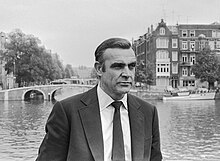
Bond is tasked with investigating a major diamond smuggling ring which begins in Africa and runs through Holland and the UK to the United States. Disguised as professional smuggler and murderer Peter Franks, Bond travels to Amsterdam to meet contact Tiffany Case: he is given the diamonds and travels on to the US, where he is met by Felix Leiter. Bond moves through the chain, which leads to the Whyte House, a casino-hotel owned by the reclusive billionaire Willard Whyte.
Bond follows the diamonds to a pick-up by Bert Saxby, Whyte’s head of security, and then onto a research laboratory owned by Whyte, where he finds that a satellite is being built by a laser refraction specialist, Professor Dr. Metz. Suspecting Whyte, Bond tries to confront him, but instead meets Blofeld, who captures the agent and explains to him that the satellite can blow up nuclear missiles. Blofeld admits that he intends to auction it to the highest bidder. Bond escapes and frees the captive Whyte and they establish that Blofeld is using an offshore oil rig as his base. Bond attacks the rig, stopping Blofeld’s operation and dispersing his organisation.
Live and Let Die (1973)[edit]
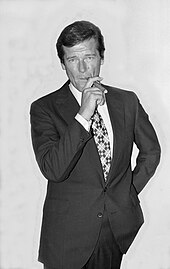
James Bond is sent to investigate the murder of three British MI6 agents, all of whom have been killed within 24 hours. The victims were all separately investigating the operations of Dr. Kananga, the dictator of a small Caribbean island, San Monique. Bond discovers that Kananga also acts as Mr. Big, a ruthless and cunning American gangster.
Upon visiting San Monique, Bond determines that Kananga is producing two tons of heroin and is protecting the poppy fields by exploiting locals’ fear of voodoo and the occult. Through his alter ego, Mr. Big, Kananga plans to distribute the heroin free of charge at his Fillet of Soul restaurants, which will increase the number of addicts. Bond is captured by Kananga, but he escapes, killing Kananga and destroying the poppy crop.
The Man with the Golden Gun (1974)[edit]
After receiving a golden bullet with James Bond’s code «007» etched into its surface M relieves Bond of a mission locating a British scientist, Gibson, who has invented the «Solex agitator», a device to harness solar power, thereby solving the energy crisis. The bullet signifies Bond is a target of assassin Francisco Scaramanga and Bond sets out unofficially to find him. From a spent golden bullet, Bond tracks Scaramanga to Macau, where he sees Scaramanga’s mistress collecting golden bullets at a casino. Bond follows her to Hong Kong, where he witnesses the murder of Gibson and the theft of the Solex agitator. Bond is subsequently assigned to retrieve the agitator and assassinate Scaramanga.
Bond meets with Hai Fat, a wealthy Thai entrepreneur suspected of arranging Gibson’s murder, and is captured, but subsequently escapes. He tracks Scaramanga to an island in Red Chinese waters, where the two men fight and Bond kills the assassin.
The Spy Who Loved Me (1977)[edit]
Bond is tasked with investigating the disappearance of British and Soviet ballistic missile submarines and the subsequent offer to sell a submarine tracking system. Bond works alongside Major Anya Amasova of the KGB. The pair track the plans across Egypt and identify the person responsible for the thefts as shipping tycoon, scientist and anarchist Karl Stromberg.
Bond and Amasova follow a suspicious tanker owned by Stromberg and establish it is responsible for the missing submarines; the submarine in which they are travelling is also captured by Stromberg. Stromberg plans to destroy Moscow and New York, triggering nuclear war, and to then establish a new civilisation. Bond escapes, freeing the submariners captured from the other submarines, and follows Stromberg to his headquarters, where he shoots the tycoon and a torpedo destroys the base.
Moonraker (1979)[edit]
A Drax Industries Moonraker space shuttle on loan is hijacked and Bond is ordered to investigate. Bond meets the owner of the company, Hugo Drax and one of Drax’s scientists, Dr. Holly Goodhead. Bond follows the trail to Venice, where he establishes that Drax is manufacturing a nerve gas deadly to humans, but harmless to animals. Bond again meets Goodhead and finds out that she is a CIA agent.
Bond travels to the Amazon looking for Drax’s research facility, where he is captured. He and Goodhead pose as pilots on one of six space shuttles being sent by Drax to a hidden space station. There Bond finds out that Drax plans to destroy all human life by launching fifty globes containing the toxin into the Earth’s atmosphere. Bond and Goodhead disable the radar jammer hiding the station from Earth and the US sends a platoon of Marines in a military space shuttle. During the battle, Bond kills Drax and his station is destroyed.
For Your Eyes Only (1981)[edit]
After a British spy boat sinks, a marine archaeologist, Sir Timothy Havelock, is tasked to retrieve its Automatic Targeting Attack Communicator (ATAC) communication system before the Russians do. After Havelock is murdered by Gonzales, a Cuban hit-man, Bond is ordered to find out who hired Gonzales. While investigating, Bond is captured, but Gonzales is subsequently killed by Havelock’s daughter Melina, and she and Bond escape. Bond identifies one of those present with Gonzales as Emile Leopold Locque and so follows a lead to Italy and meets his contact, Luigi Ferrara, and a well-connected Greek businessman and intelligence informant, Aris Kristatos. Kristatos tells Bond that Locque is employed by Milos Columbo, Kristatos’ former organised crime partner.
After Ferrara is murdered—and the evidence points to Columbo—Bond is captured by men working for Columbo. Columbo then explains that Locque was actually hired by Kristatos, who is working for the KGB to retrieve the ATAC. Bond and Melina recover the ATAC but are captured by Kristatos. They escape and follow Kristatos to Greece, where he is killed and the ATAC is destroyed by Bond.
Octopussy (1983)[edit]
Bond investigates the murder of 009, killed in East Berlin while dressed as a circus clown and carrying a fake Fabergé egg. An identical egg appears at auction and Bond establishes the buyer, exiled Afghan prince Kamal Khan, is working with Orlov, a renegade Soviet general, who is seeking to expand Soviet borders into Europe. Bond meets Octopussy, a wealthy woman who leads the Octopus cult. Bond finds out that Orlov has been supplying Khan with priceless Soviet treasures, replacing them with replicas, while Khan has been smuggling the real versions into the West via Octopussy’s circus troupe.
Bond infiltrates the circus and finds that Orlov replaced the Soviet treasures with a nuclear warhead primed to explode at a US Air Force base in West Germany. The explosion would trigger Europe into seeking disarmament, in the belief that the bomb was an American one that was detonated by accident, leaving the West’s borders open to Soviet invasion. Bond deactivates the warhead and then he returns to India, joining an assault on Khan’s palace.
A View to a Kill (1985)[edit]
Bond investigates millionaire industrialist Max Zorin, who is trying to corner the world market in microchips. He establishes that Zorin was previously trained and financed by the KGB, but has now gone rogue. Zorin unveils to a group of investors his plan to destroy Silicon Valley, which will give him a monopoly in the manufacturing of microchips.
Bond uncovers Zorin’s plan is to detonate explosives beneath the lakes along the Hayward and San Andreas faults, which will cause them to flood. A larger bomb in a mine will destroy a «geological lock» that prevents the two faults from moving at the same time. Bond destroys the bomb, and subsequently kills Zorin.
The Living Daylights (1987)[edit]

Bond aids the defection of KGB officer General Georgi Koskov, by wounding a female KGB sniper, Kara Milovy, a cellist. During his debriefing Koskov alleges that the KGB’s old policy of Smiert Spionam, meaning Death to Spies, has been revived by General Leonid Pushkin, its new head. Koskov is subsequently abducted from the safe-house and Bond is ordered to kill Pushkin.
Bond tracks down Milovy and establishes she is Koskov’s girlfriend and that the defection was staged. He subsequently finds out that Koskov is a friend of the arms dealer Brad Whitaker. After meeting Pushkin and faking his assassination, Bond investigates a scheme by Koskov and Whitaker to embezzle KGB funds and use them to purchase diamonds, which they then use to purchase drugs. After Koskov purchases the drugs, Bond destroys them. Koskov is subsequently arrested by Pushkin, while Bond kills Whitaker.
Licence to Kill (1989)[edit]
Bond aids Felix Leiter in the capture of drugs lord Franz Sanchez; Sanchez escapes and maims Leiter, killing his wife. Bond swears revenge, but is ordered to return to duty by M. Bond refuses, and M revokes his licence to kill, causing Bond to become a rogue agent; although officially stripped of his status, he is unofficially given help by Q.
Bond journeys to Sanchez’s home in the Republic of Isthmus and is taken-on to Sanchez’s staff, where he manages to raise Sanchez’s suspicions against a number of his employees. When Bond is taken to Sanchez’s main base and drugs refinery, he is recognised by one of Sanchez’s men and captured. He escapes, destroying the refinery in the process, and pursues Sanchez, killing him.
GoldenEye (1995)[edit]
In 1986 Bond and Alec Trevelyan—agent 006—infiltrate an illicit Soviet chemical weapons facility and plant explosive charges. Trevelyan is shot, but Bond escapes from the facility as it explodes. Nine years later, Bond witnesses the theft by criminal organisation Janus of a prototype Eurocopter Tiger helicopter that can withstand an electromagnetic pulse. Janus uses the helicopter to steal the control disk for the dual GoldenEye satellite weapons, using the GoldenEye to destroy the complex with an electromagnetic pulse; there are two survivors of the attack, the programmers Natalya Simonova and Boris Grishenko.
Bond investigates the attack and travels to Russia where he locates Simonova and learns that Trevelyan, who had faked his own death, was the head of Janus. Simonova tracks computer traffic to Cuba and she and Bond travel there and locate Trevelyan, who reveals his plan to steal money from the Bank of England before erasing all of its financial records with the GoldenEye, concealing the theft and destroying Britain’s economy. Bond and Simonova destroy the satellite facility, killing Trevelyan and Grishenko in the process.
Tomorrow Never Dies (1997)[edit]
Bond investigates the sinking of a British warship in Chinese waters, the theft of one of the ship’s cruise missiles, and the shooting down of a Chinese fighter plane. He uncovers a link to media mogul Elliot Carver which suggests that Carver had purchased a GPS encoder on the black market.
Bond encounters Chinese agent Wai Lin, who is also investigating the matter, and the two agree to work together. They discover that Carver had used the GPS encoder to push the British ship off course and into Chinese waters to incite a war for ratings. With the British fleet on their way to China, Bond and Wai Lin find Carver’s stealth ship, board it and prevent the firing of a British cruise missile at Beijing. They blow a hole in the ship, exposing it to radar, leading to its sinking and thus averting war between Britain and China.
The World Is Not Enough (1999)[edit]
Bond recovers money for Sir Robert King, a British oil tycoon and friend of M, but the money is booby-trapped and kills King shortly afterwards. Bond traces the money to Renard, a KGB agent-turned-terrorist, who had previously kidnapped King’s daughter Elektra. MI6 believes that Renard is targeting Elektra King a second time and Bond is assigned to protect her; the pair are subsequently attacked.
Bond visits Valentin Zukovsky and is informed that Elektra’s head of security, Davidov, is in league with Renard: Bond kills Davidov and follows the trail to a Russian ICBM base in Kazakhstan. Posing as a Russian nuclear scientist, Bond meets American nuclear physicist Christmas Jones. The two witness Renard stealing the GPS locator card and a half quantity of weapons-grade plutonium from a bomb and set off an explosion, from which Bond and Jones escape. Elektra kidnaps M after she thinks Bond had been killed and Bond establishes that Elektra intends to create a nuclear explosion in a submarine in Istanbul to increase the value of her own oil pipeline. Bond frees M, kills Elektra and then disarms the bomb on the submarine, where he kills Renard.
Die Another Day (2002)[edit]

Bond investigates North Korean Colonel Tan-Sun Moon, who is illegally trading African conflict diamonds for weapons. Moon is apparently killed and Bond is captured and tortured for 14 months, after which he is exchanged for Zao, Moon’s assistant. Despite being suspended on his return, he decides to complete his mission and tracks down Zao to a gene therapy clinic, where patients can have their appearances altered through DNA restructuring. Zao escapes, but the trail leads to British billionaire Gustav Graves.
Graves unveils a mirror satellite, «Icarus», which is able to focus solar energy on a small area and provide year-round sunshine for crop development. Bond discovers that Moon has also undergone the gene therapy and has assumed the identity of Graves. Bond then exposes Moon’s plan: to use the Icarus as a sun gun to cut a path through the Korean Demilitarized Zone with concentrated sunlight, allowing North Korean troops to invade South Korea and reunite the countries through force. Bond disables the Icarus controls, kills Moon and stops the invasion.
Casino Royale (2006)[edit]
This serves as a reboot of the series, with Bond gaining his 00 status in the pre-credits sequence. Bond is instructed to investigate the funding of terrorism. He tracks down and kills a bomb-maker and takes his mobile phone. Searching through the phone, Bond discovers a text message which he traces to Alex Dimitrios, and then on to financer Le Chiffre. Le Chiffre’s investments involve short-selling stock in successful companies and then engineering terrorist attacks to sink their share prices. Bond foils Le Chiffre’s plan to destroy the prototype Skyfleet airliner, which forces Le Chiffre to set up a high-stakes poker tournament at the Casino Royale to recoup his fortune. Bond is instructed to beat Le Chiffre and is aided by a member of HM Treasury, Vesper Lynd.
Bond beats Le Chiffre at the poker table, but Lynd is kidnapped by Le Chiffre after the game, as is Bond, who is captured while pursuing them; Lynd is ransomed for the money and Bond is tortured. Le Chiffre is subsequently killed by Mr. White, a liaison between Le Chiffre and a number of his clients. Bond learns that his poker winnings were never repaid to the Treasury, which Lynd was supposed to have done, and establishes that she was a double agent. Bond pursues her and is attacked by members of White’s organisation: he survives, but White takes the money and Lynd sacrifices herself in exchange for Bond’s life, as he later finds out from M. Bond subsequently finds and captures White.
Quantum of Solace (2008)[edit]
Along with M, Bond interrogates Mr. White regarding his organisation, Quantum. M’s bodyguard, Mitchell, a double agent, attacks M, enabling White to escape. Bond traces the organisation to Haiti and a connection to environmentalist Dominic Greene.
Bond uncovers a plot between Greene and an exiled Bolivian General, Medrano, to put Medrano in power in Bolivia while Quantum is given a monopoly to run the water supply to the country. Bond ascertains that Quantum is damming Bolivia’s supply of fresh water to force the price up. Bond attacks the hotel where Greene and Medrano are finalising their plans and leaves Greene stranded in the desert with only a tin of engine oil to drink. Bond then finds Vesper Lynd’s former lover and member of Quantum, Yusef Kabira.
Skyfall (2012)[edit]
After an operation in Istanbul ends in disaster, Bond is missing and presumed to be dead. In the aftermath, questions are raised over M’s ability to run the Secret Service, and she becomes the subject of a government review over her handling of the situation. The Service itself is attacked, prompting Bond’s return to London. His presence assists MI6’s investigation in uncovering a lead, and Bond is sent to Shanghai and Macau in pursuit of a mercenary named Patrice. There, he establishes a connection to Raoul Silva, a former MI6 agent who was captured and tortured by Chinese agents. Blaming M for his imprisonment, Silva sets in motion a plan to ruin her reputation before murdering her. Bond saves M and attempts to lure Silva into a trap, and while he is successful in repelling Silva’s assault, M is mortally wounded. Bond returns to active duty under the command of the new M, Gareth Mallory.
Spectre (2015)[edit]

Following her death in Skyfall, M sends Bond a posthumous message that leads him to thwart a terrorist attack in Mexico City. Gareth Mallory takes Bond off active duty for his illegal operation, but Bond continues his investigation off the books. The trail leads him first to Rome, where he learns of a sinister terrorist organisation known as Spectre, and later to Austria. There he finds former adversary Mr. White, who has become terminally ill after being poisoned by Spectre. White asks Bond to protect his daughter Madeleine Swann from Spectre and its leader, Franz Oberhauser, before committing suicide.
Meanwhile, Mallory comes under pressure to have British intelligence join a global intelligence-sharing network code-named «Nine Eyes». With Swann’s help, Bond tracks Spectre to Morocco and learns that Spectre is behind the terror attacks, creating a need for Nine Eyes. Spectre controls Nine Eyes, giving them access to the intelligence-sharing network. Oberhauser captures and tortures Bond, revealing that his father was Bond’s guardian after the deaths of Bond’s parents. Jealous of the attention and care that his father gave to the young James Bond, Oberhauser faked his own death while at the same time murdering his own father. Now known as Ernst Stavro Blofeld, he claims responsibility for everything Bond has suffered in his career. Bond and Swann escape and return to London where Bond joins forces with Mallory and Q to shut down Nine Eyes and apprehend Blofeld.[47][48][49]
No Time to Die (2021)[edit]
Five years after Blofeld’s imprisonment, Bond is retired and living in Jamaica when Felix Leiter and his colleague Logan Ash enlist his help in searching for the missing MI6 scientist, Valdo Obruchev. Bond eventually accepts Leiter’s request and follows his leads about the scientist’s whereabouts to Cuba, where he infiltrates a Spectre gathering. Obruchev realizes that it is a trap set by Blofeld to kill Bond with the virus, but he is working for someone else and has re-engineered the virus to attack only the members of Spectre. When Bond brings Obruchev to Leiter, Ash betrays them and helps Obruchev escape, killing Leiter. Bond returns to MI6 and confronts M regarding the virus, known as «Heracles,» a nanoscale weapon that can be programmed to attack specific people based on their genetic marker. He then visits Blofeld in prison and is reacquainted with Madeleine Swann. Swann decides to leave before Blofeld arrives, while Bond has an altercation with Blofeld, who dies soon after. It is revealed that when he touched Swann, Bond was infected with Heracles nanobots that were programmed to kill Blofeld.
Bond traces Swann back to her childhood home where she is living with her five-year-old daughter, Mathilde. Swann denies the girl is Bond’s daughter. She tells Bond about Lyutsifer Safin, the man who controls Heracles. After Bond avenges Leiter’s death by killing Ash, Safin captures Swann and Mathilde and brings them to his island, which is the Heracles factory. Bond works with MI6 to rescue Swann and Mathilde and destroy Safin’s factory with a missile strike launched from a nearby Royal Navy destroyer. Before his death, Safin shoots Bond and infects him with nanobots that have been programmed to attack Swann and Mathilde. Because of this, Bond decides not to leave the island and after a tearful goodbye to Swann, who confirms that Mathilde is in fact his daughter, is killed when the missiles obliterate the factory.[50][51]
Non-Eon films[edit]
The two Bond films from other production companies have a combined gross of over $200 million (or approximately $871 million in 2020 dollars)
Casino Royale (1967)[edit]

Bond is brought out of retirement to deal with SMERSH and is promoted to the head of MI6 on the death of M. He recruits baccarat player Evelyn Tremble to beat SMERSH agent Le Chiffre. Having embezzled SMERSH’s money, Le Chiffre is desperate for money to cover up his theft. Tremble stops Le Chiffre’s cheating and beats him in a game of baccarat. Tremble is captured, tortured and killed. Bond establishes that the casino is located atop a giant underground headquarters run by the evil Dr. Noah; he and Moneypenny travel there to investigate. Dr. Noah turns out to be Sir James’s nephew Jimmy Bond, who plans to use biological warfare to make all women beautiful and kill all tall men, leaving him as the «big man» who gets all the girls. The casino is then overrun by secret agents and a battle ensues, but the building explodes, killing all inside.
Never Say Never Again (1983)[edit]
Bond investigates the hijacking of two cruise missiles with live nuclear warheads which had been taken by SPECTRE. He meets Domino Petachi, the pilot’s sister, and her lover, Maximillian Largo, SPECTRE’s Number One, who reports directly to Blofeld. Following them to France, Bond informs Domino of her brother’s death and subsequently finds his MI6 colleague killed by Fatima Blush, another SPECTRE agent: Bond kills her. Bond and Felix Leiter then attempt to board Largo’s motor yacht, the Disco Volante (Flying Saucer), in search of the missing nuclear warheads. Bond becomes trapped and is taken, with Domino, to Palmyra, Largo’s base of operations in North Africa, but Bond subsequently escapes with Domino. The two agents ambush Largo while he is placing one of the bombs.
Critical and public reception[edit]
Awards[edit]
In their sixty-year history, the Bond films have been nominated for and won many awards, including British Academy Film Awards, Golden Globe Awards and Academy Awards. In 1982, series originator Albert R. Broccoli also received the Irving G. Thalberg Memorial Award.[110]
See also[edit]
- Bond girl
- «Casino Royale» (Climax!), the first live-action adaptation of an Ian Fleming novel
- James Bond music
- Outline of James Bond
References and sources[edit]
References[edit]
- ^ a b
Poliakoff, Keith (2000). «License to Copyright – The Ongoing Dispute Over the Ownership of James Bond». Cardozo Arts & Entertainment Law Journal. 18: 387–436. - ^
Shprintz, Janet (29 March 1999). «Big Bond-holder». Variety. Retrieved 12 October 2021.Judge Rafeedie … found that McClory’s rights in the «Thunderball» material had reverted to the estate of Fleming
- ^ Chapman 2009, p. 5.
- ^ Chapman 2009, p. 43.
- ^
Judge M. Margaret McKeown (27 August 2001). «Danjaq et al. v. Sony Corporation et al» (PDF). United States Court of Appeals for the Ninth Circuit. p. 9. Archived from the original (PDF) on 4 October 2006. Retrieved 27 November 2006.in 1962 … Danjaq teamed up with United Artists to produce Bond films.
- ^
«Movie Franchises». The Numbers. Nash Information Services. Retrieved 3 January 2013. - ^ «The 54th Academy Awards (1982)». Academy of Motion Picture Arts and Sciences (AMPAS). Retrieved 27 October 2011.
- ^ Balio 1987, p. 255.
- ^
«Casino Royale (1967)». Metro-Goldwyn-Mayer. Retrieved 8 September 2011. - ^
«The Lost Bond». Total Film. Future Publishing. 27 February 2008. Retrieved 13 October 2011. - ^
«Metro-Goldwyn-Mayer Inc. announces acquisition of Never Say Never Again James Bond assets» (Press release). Metro-Goldwyn-Mayer. 4 December 1997. Archived from the original on 5 May 2008. Retrieved 16 March 2008. - ^
Sterngold, James (30 March 1999). «Sony Pictures, in an accord with MGM, drops its plan to produce new James Bond films». The New York Times. Retrieved 16 March 2008. - ^ a b c d e f g h i j k l m n o p q r s t u v Block & Autrey Wilson 2010, pp. 428–429.
- ^ a b c d e f g h i j k l m n o p Cork & Scivally 2002, pp. 300–303.
- ^ «From Russia With Love (1963)». The Numbers. Retrieved 12 October 2019.
- ^ «Goldfinger (1964)». The Numbers. Retrieved 12 October 2019.
- ^ «Thunderball (1965)». The Numbers. Retrieved 12 October 2019.
- ^ «You Only Live Twice (1967)». The Numbers. Retrieved 12 October 2019.
- ^ «Diamonds Are Forever (1971)». The Numbers. Retrieved 12 October 2019.
- ^ «The Man with the Golden Gun (1974)». The Numbers. Retrieved 12 October 2019.
- ^ «The Spy Who Loved Me (1977)». The Numbers. Retrieved 12 October 2019.
- ^ «Moonraker (1979)». The Numbers. Retrieved 12 October 2019.
- ^ «The Living Daylights (1987)». The Numbers. Retrieved 12 October 2019.
- ^ «Licence to Kill (1989)». Box Office Mojo. IMDb. Retrieved 12 October 2019.
- ^ «GoldenEye (1995)». Box Office Mojo. IMDb. Retrieved 12 October 2019.
- ^ «Tomorrow Never Dies (1997)». Box Office Mojo. IMDb. Retrieved 12 October 2019.
- ^ «The World Is Not Enough (1999)». Box Office Mojo. IMDb. Retrieved 12 October 2019.
- ^ «Die Another Day (2002)». Box Office Mojo. IMDb. Retrieved 12 October 2019.
- ^ «Casino Royale (2006)». Box Office Mojo. Retrieved 6 October 2021.
- ^ «Quantum of Solace (2008)». Box Office Mojo. IMDb. Retrieved 12 October 2019.
- ^ «Skyfall (2012)». Box Office Mojo. IMDb. Retrieved 12 October 2019.
- ^ Sizemore, Charles (10 October 2012). «Bond Investing. James Bond Investing». Forbes. Retrieved 16 November 2012.
- ^ Smith, Grady (1 November 2012). «Box office update: ‘Skyfall’ blazes past $100 million internationally». Entertainment Weekly. Retrieved 16 November 2012.
- ^ a b c d 1634–1699: McCusker, J. J. (1997). How Much Is That in Real Money? A Historical Price Index for Use as a Deflator of Money Values in the Economy of the United States: Addenda et Corrigenda (PDF). American Antiquarian Society. 1700–1799: McCusker, J. J. (1992). How Much Is That in Real Money? A Historical Price Index for Use as a Deflator of Money Values in the Economy of the United States (PDF). American Antiquarian Society. 1800–present: Federal Reserve Bank of Minneapolis. «Consumer Price Index (estimate) 1800–». Retrieved 16 April 2022.
- ^ Pamela McClintock (4 November 2015). «Box-Office Preview: ‘Spectre’ and ‘Peanuts Movie’ to the Rescue». The Hollywood Reporter. Retrieved 4 November 2015.
- ^ Anthony D’Alessandro (7 November 2015). «Spectre Now Targeting $73M to $74M Opening; The Peanuts Movie Cracking $40M–$45M». Deadline Hollywood. Retrieved 8 November 2015.
- ^ Brent Lang (4 November 2015). «Box Office: Spectre Needs to Make $650 Million to Break Even». Variety. Retrieved 8 November 2015.
- ^ Ben Fritz (8 November 2015). «Spectre, The Peanuts Movie Give Box Office a Welcome Boost». The Wall Street Journal. Retrieved 10 November 2015.
- ^ Scott Mendelson (21 October 2015). «‘Spectre’ Doesn’t Need To Top ‘Skyfall’ Because ‘James Bond’ Is A Bullet-Proof Franchise». Forbes. Retrieved 8 November 2015.
- ^ Alicia Adejobi (25 October 2015). «Spectre movie in numbers: Daniel Craig salary, film budget and James Bond theme tune sales». International Business Times. Retrieved 8 November 2015.
- ^ Anthony D’Alessandro (9 November 2015). «Even Shy Of Skyfall, Spectre Picked Up Sluggish Box Office; Will It Turn A Profit? – Monday Postmortem». Deadline Hollywood. Retrieved 11 November 2015.
- ^ «Spectre (2015)». Box Office Mojo. Retrieved 12 October 2019.
- ^ «No Time to Die (2021)«. Box Office Mojo. IMDb. Retrieved 12 December 2021.
- ^ Ford, Rebecca (6 November 2019). «Bond Women: How Rising Stars Lashana Lynch and Ana de Armas Are Helping Modernize 007». The Hollywood Reporter. Archived from the original on 20 January 2020. Retrieved 27 February 2020.
- ^ Lang, Brent; Donnelly, Matt (30 October 2020). «Breaking Down MGM’s Costly ‘No Time to Die’ Dilemma». Variety. Archived from the original on 31 October 2020. Retrieved 4 November 2020.
- ^ Munden 1997, p. 415.
- ^ «Bond returns in Spectre«. 007.com. Eon Productions. 4 December 2014. Archived from the original on 3 May 2017. Retrieved 6 December 2014.
- ^ Martin, William (4 December 2014). «‘SPECTRE’: Poster and synopsis revealed for new Bond film». Cultbox. Retrieved 4 December 2014.
- ^ «Sam Mendes: Spectre about Bond’s childhood». BBC Entertainment. BBC. 27 February 2015. Retrieved 28 February 2015.
- ^ «Bond 25 start of production». 007.com. 25 April 2019. Retrieved 25 April 2019.
- ^ Hoffman, Jordan (30 September 2021). «No Time to Die: the ending, the villain and the very big surprise – discuss with spoilers». The Guardian. Retrieved 9 October 2021.
- ^
«Box Office History for James Bond Movies». The Numbers. Nash Information Services, LLC. Retrieved 5 October 2011. - ^ «Casino Royal (1967)». The Numbers. Retrieved 12 October 2019.
- ^ «Never Say Never Again (1983)». The Numbers. Retrieved 12 October 2019.
- ^ «CinemaScore». CinemaScore. Archived from the original on 13 April 2022. Retrieved 15 April 2022.
- ^ «Dr. No (1962)». Rotten Tomatoes. Retrieved 29 September 2021.
- ^ «Dr. No Reviews». Metacritic. Retrieved 29 September 2021.
- ^ «From Russia with Love (1963)». Rotten Tomatoes. Retrieved 29 September 2021.
- ^ «From Russia with Love Reviews». Metacritic. Retrieved 29 September 2021.
- ^ «Goldfinger (1964)». Rotten Tomatoes. Retrieved 29 September 2021.
- ^ «Goldfinger Reviews». Metacritic. Retrieved 29 September 2021.
- ^ «Thunderball (1965)». Rotten Tomatoes. Retrieved 29 September 2021.
- ^ «Thunderball Reviews». Metacritic. Retrieved 29 September 2021.
- ^ «You Only Live Twice (1967)». Rotten Tomatoes. Retrieved 29 September 2021.
- ^ «You Only Live Twice Reviews». Metacritic. Retrieved 29 September 2021.
- ^ «On Her Majesty’s Secret Service (1969)». Rotten Tomatoes. Retrieved 29 September 2021.
- ^ «On Her Majesty’s Secret Service Reviews». Metacritic. Retrieved 29 September 2021.
- ^ «Diamonds Are Forever (1971)». Rotten Tomatoes. Retrieved 29 September 2021.
- ^ «Diamonds Are Forever Reviews». Metacritic. Retrieved 29 September 2021.
- ^ «Live and Let Die (1973)». Rotten Tomatoes. Retrieved 29 September 2021.
- ^ «Live and Let Die Reviews». Metacritic. Retrieved 29 September 2021.
- ^ «The Man with the Golden Gun (1974)». Rotten Tomatoes. Retrieved 29 September 2021.
- ^ «The Man with the Golden Gun Reviews». Metacritic. Retrieved 29 September 2021.
- ^ «The Spy Who Loved Me (1977)». Rotten Tomatoes. Retrieved 29 September 2021.
- ^ «The Spy Who Loved Me Reviews». Metacritic. Retrieved 29 September 2021.
- ^ «Moonraker (1979)». Rotten Tomatoes. Retrieved 29 September 2021.
- ^ «Moonraker Reviews». Metacritic. Retrieved 29 September 2021.
- ^ «For Your Eyes Only (1981)». Rotten Tomatoes. Retrieved 5 November 2021.
- ^ «For Your Eyes Only Reviews». Metacritic. Retrieved 29 September 2021.
- ^ «Octopussy (1983)». Rotten Tomatoes. Retrieved 29 September 2021.
- ^ «Octopussy Reviews». Metacritic. Retrieved 29 September 2021.
- ^ «A View to a Kill (1985)». Rotten Tomatoes. Retrieved 29 September 2021.
- ^ «A View to a Kill Reviews». Metacritic. Retrieved 29 September 2021.
- ^ «The Living Daylights (1987)». Rotten Tomatoes. Retrieved 29 September 2021.
- ^ «The Living Daylights Reviews». Metacritic. Retrieved 5 November 2021.
- ^ «Licence to Kill (1989)». Rotten Tomatoes. Retrieved 29 September 2021.
- ^ «Licence to Kill Reviews». Metacritic. Retrieved 29 September 2021.
- ^ «GoldenEye (1995)». Rotten Tomatoes. Retrieved 29 September 2021.
- ^ «GoldenEye Reviews». Metacritic. Retrieved 5 November 2021.
- ^ «Tomorrow Never Dies (1997)». Rotten Tomatoes. Retrieved 29 September 2021.
- ^ «Tomorrow Never Dies». Metacritic. Retrieved 29 September 2021.
- ^ «The World Is Not Enough (1999)». Rotten Tomatoes. Retrieved 29 September 2021.
- ^ «The World Is Not Enough Reviews». Metacritic. Retrieved 29 September 2021.
- ^ «Die Another Day (2002)». Rotten Tomatoes. Retrieved 29 September 2021.
- ^ «Die Another Day Reviews». Metacritic. Retrieved 29 September 2021.
- ^ «Casino Royale (2006)». Rotten Tomatoes. Retrieved 29 September 2021.
- ^ «Casino Royale Reviews». Metacritic. Retrieved 29 September 2021.
- ^ «Quantum of Solace (2008)». Rotten Tomatoes. Retrieved 5 November 2021.
- ^ «Quantum of Solace Reviews». Metacritic. Retrieved 29 September 2021.
- ^ «Skyfall (2012)». Rotten Tomatoes. Retrieved 5 November 2021.
- ^ «Skyfall Reviews». Metacritic. Retrieved 29 September 2021.
- ^ «Spectre (2015)». Rotten Tomatoes. Retrieved 5 November 2021.
- ^ «Spectre Reviews». Metacritic. Retrieved 29 September 2021.
- ^ «No Time to Die». Rotten Tomatoes. Retrieved 15 February 2022.
- ^ «No Time to Die». Metacritic. Retrieved 15 February 2022.
- ^ «Casino Royale (1967)». Rotten Tomatoes. Retrieved 29 September 2021.
- ^ «Casino Royale (1967) Reviews». Metacritic. Retrieved 29 September 2021.
- ^ «Never Say Never Again (1983)». Rotten Tomatoes. Retrieved 29 September 2021.
- ^ «Never Say Never Again Reviews». Metacritic. Retrieved 29 September 2021.
- ^ «Academy Awards Database». Academy of Motion Picture Arts and Sciences. Archived from the original on 25 February 2012. Retrieved 16 October 2012.
- ^
«The 21st Annual Golden Globe Awards (1964)». Golden Globe Awards. Hollywood Foreign Press Association. Archived from the original on 14 April 2013. Retrieved 27 September 2012. - ^ «BAFTA Awards 1963». BAFTA Awards Database. British Academy of Film and Television Arts. Retrieved 27 September 2012.
- ^
«The 21st Annual Golden Globe Awards (1964)». Golden Globe Awards. Hollywood Foreign Press Association. Archived from the original on 22 July 2012. Retrieved 27 September 2012. - ^ «The 37th Academy Awards (1965) Nominees and Winners». Academy of Motion Picture Arts and Sciences (AMPAS). Retrieved 27 October 2011.
- ^ «BAFTA Awards 1964». BAFTA Awards Database. British Academy of Film and Television Arts. Retrieved 27 September 2012.
- ^ «The 38th Academy Awards (1966) Nominees and Winners». Academy of Motion Picture Arts and Sciences (AMPAS). Retrieved 27 October 2011.
- ^ «BAFTA Awards 1964». BAFTA Awards Database. British Academy of Film and Television Arts. Retrieved 27 September 2012.
- ^ a b «BAFTA Awards 1967». BAFTA Awards Database. British Academy of Film and Television Arts. Retrieved 27 September 2012.
- ^
«The 27th Annual Golden Globe Awards (1970)». Golden Globe Awards. Hollywood Foreign Press Association. Archived from the original on 14 April 2013. Retrieved 27 September 2012. - ^ «The 44th Academy Awards (1971) Nominees and Winners». Academy of Motion Picture Arts and Sciences (AMPAS). Retrieved 26 September 2012.
- ^ «The 46th Academy Awards (1974) Nominees and Winners». Academy of Motion Picture Arts and Sciences (AMPAS). Retrieved 27 October 2011.
- ^ «The 50th Academy Awards (1978) Nominees and Winners». Academy of Motion Picture Arts and Sciences (AMPAS). Retrieved 27 October 2011.
- ^ a b «BAFTA Awards 1977». BAFTA Awards Database. British Academy of Film and Television Arts. Retrieved 27 September 2012.
- ^ a b
«The 35th Annual Golden Globe Awards (1978)». Golden Globe Awards. Hollywood Foreign Press Association. Archived from the original on 23 May 2013. Retrieved 27 September 2012. - ^ «The 52nd Academy Awards (1979) Nominees and Winners». Oscar Legacy. Academy of Motion Picture Arts and Sciences (AMPAS). Retrieved 26 September 2012.
- ^ «The 54th Academy Awards (1982)». Academy of Motion Picture Arts and Sciences (AMPAS). Retrieved 27 October 2011.
- ^
«The 39th Annual Golden Globe Awards (1982)». Golden Globe Awards. Hollywood Foreign Press Association. Archived from the original on 14 April 2013. Retrieved 27 September 2012. - ^
«The 43rd Annual Golden Globe Awards (1986)». Golden Globe Awards. Hollywood Foreign Press Association. Archived from the original on 15 April 2013. Retrieved 27 September 2012. - ^ «BAFTA Awards 1995». BAFTA Awards Database. British Academy of Film and Television Arts. Retrieved 27 September 2012.
- ^ «BAFTA Awards 1995». BAFTA Awards Database. British Academy of Film and Television Arts. Retrieved 27 September 2012.
- ^
«The 55th Annual Golden Globe Awards (1998)». Golden Globe Awards. Hollywood Foreign Press Association. Archived from the original on 15 April 2013. Retrieved 27 September 2012. - ^
«The 60th Annual Golden Globe Awards (2003)». Golden Globe Awards. Hollywood Foreign Press Association. Archived from the original on 14 April 2013. Retrieved 27 September 2012. - ^ a b c d e
«BAFTA Awards 2006». BAFTA Awards Database. British Academy of Film and Television Arts. Retrieved 27 September 2012. - ^
«BAFTA Awards 2006». BAFTA Awards Database. British Academy of Film and Television Arts. Retrieved 27 September 2012. - ^ a b c
«BAFTA Awards 2006». BAFTA Awards Database. British Academy of Film and Television Arts. Retrieved 27 September 2012. - ^ a b
«BAFTA Awards 2008». BAFTA Awards Database. British Academy of Film and Television Arts. Retrieved 27 September 2012. - ^ a b c d e «The 85th Academy Awards (2013) Nominees and Winners». Academy of Motion Picture Arts and Sciences (AMPAS). Retrieved 25 February 2013.
- ^ «LA Film Critics Vote Michael Haneke’s ‘Amour’ Best Pic, Paul Thomas Anderson Best Director For ‘The Master’«. 9 December 2012. Retrieved 11 December 2012.
- ^
«The 70th Annual Golden Globe Awards (2013)». Golden Globe Awards. Hollywood Foreign Press Association. Archived from the original on 15 April 2013. Retrieved 2 February 2013. - ^ a b «Bafta Film Awards 2013: The winners». BBC News. 10 February 2013. Retrieved 25 February 2013.
- ^ «The 88th Academy Awards (2016) Nominees and Winners». Academy of Motion Picture Arts and Sciences (AMPAS). Retrieved 20 October 2021.
- ^ «The 40th Academy Awards (1968) Nominees and Winners». Academy of Motion Picture Arts and Sciences (AMPAS). Retrieved 27 October 2011.
- ^ «The 41st Golden Globes Winners and Nominees». Hollywood Foreign Press Association. Retrieved 20 March 2020.
Sources[edit]
- Balio, Tino (1987). United Artists: The Company That Changed the Film Industry. Madison: University of Wisconsin Press. ISBN 978-0-299-11440-4.
- Block, Alex Ben; Autrey Wilson, Lucy (2010). George Lucas’s Blockbusting: A Decade-by-Decade Survey of Timeless Movies Including Untold Secrets of Their Financial and Cultural Success. London: HarperCollins. ISBN 978-0-06-177889-6.
- Chapman, James (2009). Licence To Thrill: A Cultural History of the James Bond Films. London: I.B. Tauris. ISBN 978-1-84511-515-9.
- Cork, John; Scivally, Bruce (2002). James Bond: The Legacy. London: Boxtree. ISBN 978-0-7522-6498-1.
- Munden, Kenneth White (1997) [1976]. The American Film Institute Catalog of Motion Pictures Produced in the United States, Part 2. Berkeley and Los Angeles, California: University of California Press. ISBN 978-0-5202-0970-1.
James Bond is a fictional character created by British novelist Ian Fleming in 1953. A British secret agent working for MI6 under the codename 007, Bond has been portrayed on film in twenty-seven productions by actors Sean Connery, David Niven, George Lazenby, Roger Moore, Timothy Dalton, Pierce Brosnan and Daniel Craig. Eon Productions, which now holds the adaptation rights to all of Fleming’s Bond novels, made all but two films in the film series.[1][2]
In 1961, producers Albert R. Broccoli and Harry Saltzman purchased the filming rights to Fleming’s novels.[3] They founded Eon Productions and, with financial backing by United Artists, produced Dr. No, directed by Terence Young and featuring Connery as Bond.[4] Following its release in 1962, Broccoli and Saltzman created the holding company Danjaq to ensure future productions in the James Bond film series.[5] The Eon series currently has twenty-five films, with the most recent, No Time to Die, released in September 2021. With a combined gross of $7.8 billion in nominal terms to date, it is the fifth-highest-grossing film series.[6] Adjusting for inflation, the series has earned over $19.2 billion in 2022 dollars from box-office receipts alone,[a] with non-Eon entries pushing this inflation-adjusted figure to a grand total in excess of $20 billion. The films have won six Academy Awards: for Sound Effects (now Sound Editing) in Goldfinger (at the 37th Awards), to John Stears for Visual Effects in Thunderball (at the 38th Awards), to Per Hallberg and Karen Baker Landers for Sound Editing, to Adele and Paul Epworth for Original Song in Skyfall (at the 85th Awards), to Sam Smith and Jimmy Napes for Original Song in Spectre (at the 88th Awards), and to Billie Eilish and Finneas O’Connell for Original Song in No Time to Die (at the 94th Awards). Several other songs produced for the films have been nominated for Academy Awards for Original Song, including Paul McCartney’s «Live and Let Die», Carly Simon’s «Nobody Does It Better», and Sheena Easton’s «For Your Eyes Only». In 1982, Albert R. Broccoli received the Irving G. Thalberg Memorial Award.[7]
When Broccoli and Saltzman bought the rights to existing and future Fleming titles, the deal did not include Casino Royale, which had been sold to producer Gregory Ratoff for a television adaptation in 1954. After Ratoff’s death, the rights passed to Charles K. Feldman,[8] who subsequently produced the Bond spoof Casino Royale in 1967.[9] A legal case ensured that the film rights to the novel Thunderball were held by Kevin McClory, as he, Fleming and scriptwriter Jack Whittingham had written a film script on which the novel was based.[1] Although Eon Productions and McClory joined forces to produce Thunderball, McClory still retained the rights to the story and adapted Thunderball into 1983’s non-Eon entry, Never Say Never Again.[10] Distribution rights to both of those films are currently held by Metro-Goldwyn-Mayer Pictures, which distributes Eon’s regular series.[11][12]
Eon films[edit]
- ^ By converting the total 2005-adjusted box-office gross of $12.672 billion to 2022 dollars, the current inflation-adjusted box-office as of 2022 is approximately $19.2 billion
- ^ The official production budget for Spectre has been debated. Estimates range from $245–250[35][36][37][38] to as high as $300–350 million[39][40] The $350 million figure also incorporates the $100 million marketing budget.[41]
Dr. No (1962)[edit]
Strangways, the British Intelligence (SIS) Station Chief in Jamaica, is killed. In response, British agent James Bond—also known as 007—is sent to Jamaica to investigate the circumstances. During his investigation Bond meets Quarrel, a Cayman fisherman, who had been working with Strangways around the nearby islands to collect mineral samples. One of the islands was Crab Key, home to the reclusive Dr. No.
Bond visits the island, where he meets a local shell diver, Honey Ryder. The three are attacked by No’s men, who kill Quarrel using a flamethrowing armoured tractor; Bond and Honey are taken prisoner. Dr. No informs them he is a member of SPECTRE, the Special Executive for Counter-intelligence, Terrorism, Revenge and Extortion, and he plans to disrupt the Project Mercury space launch from Cape Canaveral with his atomic-powered radio beam. Bond and Honey escape from the island, killing No and blowing up his compound in the process.
From Russia with Love (1963)[edit]
SPECTRE’s expert planner Kronsteen, known as «Number Five», upon order of the organisation’s Number One, devises a plot to steal a Lektor cryptographic device from the Soviets and sell it back to them while exacting revenge on Bond for killing their agent Dr. No; ex-SMERSH operative Rosa Klebb, SPECTRE’s Number Three, is in charge of the mission. She recruits Donald «Red» Grant as an assassin and Tatiana Romanova, a cipher clerk at the Soviet consulate in Istanbul, as the unwitting bait.
Bond travels to Turkey and meets Ali Kerim Bey, the MI6 officer in Turkey. Between them, they obtain the Lektor, and the three escape with the device on the Orient Express. However, they are followed by Grant, who kills Kerim Bey and a Soviet security officer. Grant pretends to be another British agent and meets Bond. Over dinner Grant drugs Romanova, then overcomes Bond. Bond tricks Grant into opening Bond’s attaché case in the manner that detonates its tear gas booby trap, allowing Bond to attack and kill him. Bond and Romanova escape with the Lektor to Venice. Rosa Klebb, disguised as a hotel maid, attempts to steal the Lektor and kill Bond, but ends up being shot by Romanova.
Goldfinger (1964)[edit]

James Bond’s Aston Martin DB5 debuted in Goldfinger and also appears in Thunderball, GoldenEye, Tomorrow Never Dies, Skyfall, Spectre and No Time to Die.
Bond is ordered to observe bullion dealer Auric Goldfinger. He suspects Goldfinger of cheating at cards and foils his scheme by distracting his female accomplice, who is later killed by Goldfinger’s Korean manservant and henchman Oddjob after Bond seduces her. Bond is then instructed to investigate Goldfinger’s gold smuggling operation and he tails the dealer to Switzerland. Bond is captured when he reconnoitres Goldfinger’s plant and is drugged unconscious; Goldfinger then transports Bond to his Kentucky stud farm where he holds Bond captive. Bond escapes briefly to witness Goldfinger’s meeting with US mafiosi, observing secretly as Goldfinger presents to the gangsters his plans to rob Fort Knox by using materials they have smuggled to him and later kills them to avoid paying his dues.
Bond is recaptured after hearing the details of the operation, but he subsequently seduces Pussy Galore, Goldfinger’s private pilot, and convinces her to inform the American authorities. Goldfinger’s private army breaks into Fort Knox and accesses the vault, where Bond fights and kills Oddjob, while American troops battle with Goldfinger’s army outside. Bond’s plane is hijacked by Goldfinger, but Bond struggles with him and shoots out a window, creating an explosive decompression, killing Goldfinger.[46]
Thunderball (1965)[edit]
Bond investigates the hijacking of an Avro Vulcan loaded with two atomic bombs, which had been taken by SPECTRE. The organisation demands a ransom for the return of the bombs. Bond follows a lead to the Bahamas, where he meets up with his CIA counterpart and friend Felix Leiter. The pair suspect a rich playboy, Emilio Largo, who is soon discovered to be SPECTRE’s Number Two, ordered by the secretive Number One to direct the operation, and search the area around his yacht and then the area where they think the yacht may have travelled. After finding the plane—but without the nuclear devices on board—the two agents arrange for Largo’s yacht to be tracked and ambushed once the bombs are being moved by Largo.
You Only Live Twice (1967)[edit]
007 is sent to Japan to investigate the spacecraft theft and astronaut kidnapping in orbit of American Project Gemini spacecraft Jupiter 16 by an unidentified spacecraft. Upon his arrival, Bond is contacted by Aki, assistant to the Japanese secret service leader Tiger Tanaka. Bond established that the mastermind behind the hijacking is SPECTRE’s Number One, Ernst Stavro Blofeld, in conjunction with Osato, a local industrialist. Bond follows the trail to Blofeld’s island headquarters and spaceport, while the spacecraft, Bird One, attacks a Soviet capsule. Blofeld explains to Bond that his plot is to fake in front of each superpower that Bird One is an enemy spacecraft to transform the Cold War into World War III.

Tanaka’s ninja troops attack the island, while Bond manages to distract Blofeld and create a diversion which allows him to open the hatch, letting in the ninjas. During the battle, Osato is killed by Blofeld, who activates the base’s self-destruct system and escapes. Bond, Kissy, Tanaka and the surviving ninjas escape through the cave tunnel before it explodes, and are rescued by submarine.
On Her Majesty’s Secret Service (1969)[edit]
While searching for Blofeld, the head of SPECTRE, Bond (played by George Lazenby) saves Tracy di Vicenzo (Diana Rigg) on the beach from committing suicide by drowning, and later meets her again in a casino. Bond then receives information from Marc-Ange Draco, the head of the European crime syndicate Unione Corse and Tracy’s father, about Blofeld’s Swiss solicitor. Bond breaks into the solicitor’s office and establishes Blofeld is corresponding with the London College of Arms. Posing as an emissary of the college, Bond meets Blofeld, who has established a clinical allergy-research institute atop Piz Gloria in the Swiss Alps. Bond soon establishes that Blofeld is brainwashing his patients to distribute bacteriological warfare agents throughout various parts of the world.
Bond escapes from the clinic after Blofeld identifies him as a British agent. Bond arranges a raid on the clinic using men from Draco’s organisation. The raid is a success, although Blofeld escapes. Bond marries Tracy, but she is murdered shortly afterwards by Irma Bunt, Blofeld’s partner.
Diamonds Are Forever (1971)[edit]

Bond is tasked with investigating a major diamond smuggling ring which begins in Africa and runs through Holland and the UK to the United States. Disguised as professional smuggler and murderer Peter Franks, Bond travels to Amsterdam to meet contact Tiffany Case: he is given the diamonds and travels on to the US, where he is met by Felix Leiter. Bond moves through the chain, which leads to the Whyte House, a casino-hotel owned by the reclusive billionaire Willard Whyte.
Bond follows the diamonds to a pick-up by Bert Saxby, Whyte’s head of security, and then onto a research laboratory owned by Whyte, where he finds that a satellite is being built by a laser refraction specialist, Professor Dr. Metz. Suspecting Whyte, Bond tries to confront him, but instead meets Blofeld, who captures the agent and explains to him that the satellite can blow up nuclear missiles. Blofeld admits that he intends to auction it to the highest bidder. Bond escapes and frees the captive Whyte and they establish that Blofeld is using an offshore oil rig as his base. Bond attacks the rig, stopping Blofeld’s operation and dispersing his organisation.
Live and Let Die (1973)[edit]

James Bond is sent to investigate the murder of three British MI6 agents, all of whom have been killed within 24 hours. The victims were all separately investigating the operations of Dr. Kananga, the dictator of a small Caribbean island, San Monique. Bond discovers that Kananga also acts as Mr. Big, a ruthless and cunning American gangster.
Upon visiting San Monique, Bond determines that Kananga is producing two tons of heroin and is protecting the poppy fields by exploiting locals’ fear of voodoo and the occult. Through his alter ego, Mr. Big, Kananga plans to distribute the heroin free of charge at his Fillet of Soul restaurants, which will increase the number of addicts. Bond is captured by Kananga, but he escapes, killing Kananga and destroying the poppy crop.
The Man with the Golden Gun (1974)[edit]
After receiving a golden bullet with James Bond’s code «007» etched into its surface M relieves Bond of a mission locating a British scientist, Gibson, who has invented the «Solex agitator», a device to harness solar power, thereby solving the energy crisis. The bullet signifies Bond is a target of assassin Francisco Scaramanga and Bond sets out unofficially to find him. From a spent golden bullet, Bond tracks Scaramanga to Macau, where he sees Scaramanga’s mistress collecting golden bullets at a casino. Bond follows her to Hong Kong, where he witnesses the murder of Gibson and the theft of the Solex agitator. Bond is subsequently assigned to retrieve the agitator and assassinate Scaramanga.
Bond meets with Hai Fat, a wealthy Thai entrepreneur suspected of arranging Gibson’s murder, and is captured, but subsequently escapes. He tracks Scaramanga to an island in Red Chinese waters, where the two men fight and Bond kills the assassin.
The Spy Who Loved Me (1977)[edit]
Bond is tasked with investigating the disappearance of British and Soviet ballistic missile submarines and the subsequent offer to sell a submarine tracking system. Bond works alongside Major Anya Amasova of the KGB. The pair track the plans across Egypt and identify the person responsible for the thefts as shipping tycoon, scientist and anarchist Karl Stromberg.
Bond and Amasova follow a suspicious tanker owned by Stromberg and establish it is responsible for the missing submarines; the submarine in which they are travelling is also captured by Stromberg. Stromberg plans to destroy Moscow and New York, triggering nuclear war, and to then establish a new civilisation. Bond escapes, freeing the submariners captured from the other submarines, and follows Stromberg to his headquarters, where he shoots the tycoon and a torpedo destroys the base.
Moonraker (1979)[edit]
A Drax Industries Moonraker space shuttle on loan is hijacked and Bond is ordered to investigate. Bond meets the owner of the company, Hugo Drax and one of Drax’s scientists, Dr. Holly Goodhead. Bond follows the trail to Venice, where he establishes that Drax is manufacturing a nerve gas deadly to humans, but harmless to animals. Bond again meets Goodhead and finds out that she is a CIA agent.
Bond travels to the Amazon looking for Drax’s research facility, where he is captured. He and Goodhead pose as pilots on one of six space shuttles being sent by Drax to a hidden space station. There Bond finds out that Drax plans to destroy all human life by launching fifty globes containing the toxin into the Earth’s atmosphere. Bond and Goodhead disable the radar jammer hiding the station from Earth and the US sends a platoon of Marines in a military space shuttle. During the battle, Bond kills Drax and his station is destroyed.
For Your Eyes Only (1981)[edit]
After a British spy boat sinks, a marine archaeologist, Sir Timothy Havelock, is tasked to retrieve its Automatic Targeting Attack Communicator (ATAC) communication system before the Russians do. After Havelock is murdered by Gonzales, a Cuban hit-man, Bond is ordered to find out who hired Gonzales. While investigating, Bond is captured, but Gonzales is subsequently killed by Havelock’s daughter Melina, and she and Bond escape. Bond identifies one of those present with Gonzales as Emile Leopold Locque and so follows a lead to Italy and meets his contact, Luigi Ferrara, and a well-connected Greek businessman and intelligence informant, Aris Kristatos. Kristatos tells Bond that Locque is employed by Milos Columbo, Kristatos’ former organised crime partner.
After Ferrara is murdered—and the evidence points to Columbo—Bond is captured by men working for Columbo. Columbo then explains that Locque was actually hired by Kristatos, who is working for the KGB to retrieve the ATAC. Bond and Melina recover the ATAC but are captured by Kristatos. They escape and follow Kristatos to Greece, where he is killed and the ATAC is destroyed by Bond.
Octopussy (1983)[edit]
Bond investigates the murder of 009, killed in East Berlin while dressed as a circus clown and carrying a fake Fabergé egg. An identical egg appears at auction and Bond establishes the buyer, exiled Afghan prince Kamal Khan, is working with Orlov, a renegade Soviet general, who is seeking to expand Soviet borders into Europe. Bond meets Octopussy, a wealthy woman who leads the Octopus cult. Bond finds out that Orlov has been supplying Khan with priceless Soviet treasures, replacing them with replicas, while Khan has been smuggling the real versions into the West via Octopussy’s circus troupe.
Bond infiltrates the circus and finds that Orlov replaced the Soviet treasures with a nuclear warhead primed to explode at a US Air Force base in West Germany. The explosion would trigger Europe into seeking disarmament, in the belief that the bomb was an American one that was detonated by accident, leaving the West’s borders open to Soviet invasion. Bond deactivates the warhead and then he returns to India, joining an assault on Khan’s palace.
A View to a Kill (1985)[edit]
Bond investigates millionaire industrialist Max Zorin, who is trying to corner the world market in microchips. He establishes that Zorin was previously trained and financed by the KGB, but has now gone rogue. Zorin unveils to a group of investors his plan to destroy Silicon Valley, which will give him a monopoly in the manufacturing of microchips.
Bond uncovers Zorin’s plan is to detonate explosives beneath the lakes along the Hayward and San Andreas faults, which will cause them to flood. A larger bomb in a mine will destroy a «geological lock» that prevents the two faults from moving at the same time. Bond destroys the bomb, and subsequently kills Zorin.
The Living Daylights (1987)[edit]

Bond aids the defection of KGB officer General Georgi Koskov, by wounding a female KGB sniper, Kara Milovy, a cellist. During his debriefing Koskov alleges that the KGB’s old policy of Smiert Spionam, meaning Death to Spies, has been revived by General Leonid Pushkin, its new head. Koskov is subsequently abducted from the safe-house and Bond is ordered to kill Pushkin.
Bond tracks down Milovy and establishes she is Koskov’s girlfriend and that the defection was staged. He subsequently finds out that Koskov is a friend of the arms dealer Brad Whitaker. After meeting Pushkin and faking his assassination, Bond investigates a scheme by Koskov and Whitaker to embezzle KGB funds and use them to purchase diamonds, which they then use to purchase drugs. After Koskov purchases the drugs, Bond destroys them. Koskov is subsequently arrested by Pushkin, while Bond kills Whitaker.
Licence to Kill (1989)[edit]
Bond aids Felix Leiter in the capture of drugs lord Franz Sanchez; Sanchez escapes and maims Leiter, killing his wife. Bond swears revenge, but is ordered to return to duty by M. Bond refuses, and M revokes his licence to kill, causing Bond to become a rogue agent; although officially stripped of his status, he is unofficially given help by Q.
Bond journeys to Sanchez’s home in the Republic of Isthmus and is taken-on to Sanchez’s staff, where he manages to raise Sanchez’s suspicions against a number of his employees. When Bond is taken to Sanchez’s main base and drugs refinery, he is recognised by one of Sanchez’s men and captured. He escapes, destroying the refinery in the process, and pursues Sanchez, killing him.
GoldenEye (1995)[edit]
In 1986 Bond and Alec Trevelyan—agent 006—infiltrate an illicit Soviet chemical weapons facility and plant explosive charges. Trevelyan is shot, but Bond escapes from the facility as it explodes. Nine years later, Bond witnesses the theft by criminal organisation Janus of a prototype Eurocopter Tiger helicopter that can withstand an electromagnetic pulse. Janus uses the helicopter to steal the control disk for the dual GoldenEye satellite weapons, using the GoldenEye to destroy the complex with an electromagnetic pulse; there are two survivors of the attack, the programmers Natalya Simonova and Boris Grishenko.
Bond investigates the attack and travels to Russia where he locates Simonova and learns that Trevelyan, who had faked his own death, was the head of Janus. Simonova tracks computer traffic to Cuba and she and Bond travel there and locate Trevelyan, who reveals his plan to steal money from the Bank of England before erasing all of its financial records with the GoldenEye, concealing the theft and destroying Britain’s economy. Bond and Simonova destroy the satellite facility, killing Trevelyan and Grishenko in the process.
Tomorrow Never Dies (1997)[edit]
Bond investigates the sinking of a British warship in Chinese waters, the theft of one of the ship’s cruise missiles, and the shooting down of a Chinese fighter plane. He uncovers a link to media mogul Elliot Carver which suggests that Carver had purchased a GPS encoder on the black market.
Bond encounters Chinese agent Wai Lin, who is also investigating the matter, and the two agree to work together. They discover that Carver had used the GPS encoder to push the British ship off course and into Chinese waters to incite a war for ratings. With the British fleet on their way to China, Bond and Wai Lin find Carver’s stealth ship, board it and prevent the firing of a British cruise missile at Beijing. They blow a hole in the ship, exposing it to radar, leading to its sinking and thus averting war between Britain and China.
The World Is Not Enough (1999)[edit]
Bond recovers money for Sir Robert King, a British oil tycoon and friend of M, but the money is booby-trapped and kills King shortly afterwards. Bond traces the money to Renard, a KGB agent-turned-terrorist, who had previously kidnapped King’s daughter Elektra. MI6 believes that Renard is targeting Elektra King a second time and Bond is assigned to protect her; the pair are subsequently attacked.
Bond visits Valentin Zukovsky and is informed that Elektra’s head of security, Davidov, is in league with Renard: Bond kills Davidov and follows the trail to a Russian ICBM base in Kazakhstan. Posing as a Russian nuclear scientist, Bond meets American nuclear physicist Christmas Jones. The two witness Renard stealing the GPS locator card and a half quantity of weapons-grade plutonium from a bomb and set off an explosion, from which Bond and Jones escape. Elektra kidnaps M after she thinks Bond had been killed and Bond establishes that Elektra intends to create a nuclear explosion in a submarine in Istanbul to increase the value of her own oil pipeline. Bond frees M, kills Elektra and then disarms the bomb on the submarine, where he kills Renard.
Die Another Day (2002)[edit]

Bond investigates North Korean Colonel Tan-Sun Moon, who is illegally trading African conflict diamonds for weapons. Moon is apparently killed and Bond is captured and tortured for 14 months, after which he is exchanged for Zao, Moon’s assistant. Despite being suspended on his return, he decides to complete his mission and tracks down Zao to a gene therapy clinic, where patients can have their appearances altered through DNA restructuring. Zao escapes, but the trail leads to British billionaire Gustav Graves.
Graves unveils a mirror satellite, «Icarus», which is able to focus solar energy on a small area and provide year-round sunshine for crop development. Bond discovers that Moon has also undergone the gene therapy and has assumed the identity of Graves. Bond then exposes Moon’s plan: to use the Icarus as a sun gun to cut a path through the Korean Demilitarized Zone with concentrated sunlight, allowing North Korean troops to invade South Korea and reunite the countries through force. Bond disables the Icarus controls, kills Moon and stops the invasion.
Casino Royale (2006)[edit]
This serves as a reboot of the series, with Bond gaining his 00 status in the pre-credits sequence. Bond is instructed to investigate the funding of terrorism. He tracks down and kills a bomb-maker and takes his mobile phone. Searching through the phone, Bond discovers a text message which he traces to Alex Dimitrios, and then on to financer Le Chiffre. Le Chiffre’s investments involve short-selling stock in successful companies and then engineering terrorist attacks to sink their share prices. Bond foils Le Chiffre’s plan to destroy the prototype Skyfleet airliner, which forces Le Chiffre to set up a high-stakes poker tournament at the Casino Royale to recoup his fortune. Bond is instructed to beat Le Chiffre and is aided by a member of HM Treasury, Vesper Lynd.
Bond beats Le Chiffre at the poker table, but Lynd is kidnapped by Le Chiffre after the game, as is Bond, who is captured while pursuing them; Lynd is ransomed for the money and Bond is tortured. Le Chiffre is subsequently killed by Mr. White, a liaison between Le Chiffre and a number of his clients. Bond learns that his poker winnings were never repaid to the Treasury, which Lynd was supposed to have done, and establishes that she was a double agent. Bond pursues her and is attacked by members of White’s organisation: he survives, but White takes the money and Lynd sacrifices herself in exchange for Bond’s life, as he later finds out from M. Bond subsequently finds and captures White.
Quantum of Solace (2008)[edit]
Along with M, Bond interrogates Mr. White regarding his organisation, Quantum. M’s bodyguard, Mitchell, a double agent, attacks M, enabling White to escape. Bond traces the organisation to Haiti and a connection to environmentalist Dominic Greene.
Bond uncovers a plot between Greene and an exiled Bolivian General, Medrano, to put Medrano in power in Bolivia while Quantum is given a monopoly to run the water supply to the country. Bond ascertains that Quantum is damming Bolivia’s supply of fresh water to force the price up. Bond attacks the hotel where Greene and Medrano are finalising their plans and leaves Greene stranded in the desert with only a tin of engine oil to drink. Bond then finds Vesper Lynd’s former lover and member of Quantum, Yusef Kabira.
Skyfall (2012)[edit]
After an operation in Istanbul ends in disaster, Bond is missing and presumed to be dead. In the aftermath, questions are raised over M’s ability to run the Secret Service, and she becomes the subject of a government review over her handling of the situation. The Service itself is attacked, prompting Bond’s return to London. His presence assists MI6’s investigation in uncovering a lead, and Bond is sent to Shanghai and Macau in pursuit of a mercenary named Patrice. There, he establishes a connection to Raoul Silva, a former MI6 agent who was captured and tortured by Chinese agents. Blaming M for his imprisonment, Silva sets in motion a plan to ruin her reputation before murdering her. Bond saves M and attempts to lure Silva into a trap, and while he is successful in repelling Silva’s assault, M is mortally wounded. Bond returns to active duty under the command of the new M, Gareth Mallory.
Spectre (2015)[edit]

Following her death in Skyfall, M sends Bond a posthumous message that leads him to thwart a terrorist attack in Mexico City. Gareth Mallory takes Bond off active duty for his illegal operation, but Bond continues his investigation off the books. The trail leads him first to Rome, where he learns of a sinister terrorist organisation known as Spectre, and later to Austria. There he finds former adversary Mr. White, who has become terminally ill after being poisoned by Spectre. White asks Bond to protect his daughter Madeleine Swann from Spectre and its leader, Franz Oberhauser, before committing suicide.
Meanwhile, Mallory comes under pressure to have British intelligence join a global intelligence-sharing network code-named «Nine Eyes». With Swann’s help, Bond tracks Spectre to Morocco and learns that Spectre is behind the terror attacks, creating a need for Nine Eyes. Spectre controls Nine Eyes, giving them access to the intelligence-sharing network. Oberhauser captures and tortures Bond, revealing that his father was Bond’s guardian after the deaths of Bond’s parents. Jealous of the attention and care that his father gave to the young James Bond, Oberhauser faked his own death while at the same time murdering his own father. Now known as Ernst Stavro Blofeld, he claims responsibility for everything Bond has suffered in his career. Bond and Swann escape and return to London where Bond joins forces with Mallory and Q to shut down Nine Eyes and apprehend Blofeld.[47][48][49]
No Time to Die (2021)[edit]
Five years after Blofeld’s imprisonment, Bond is retired and living in Jamaica when Felix Leiter and his colleague Logan Ash enlist his help in searching for the missing MI6 scientist, Valdo Obruchev. Bond eventually accepts Leiter’s request and follows his leads about the scientist’s whereabouts to Cuba, where he infiltrates a Spectre gathering. Obruchev realizes that it is a trap set by Blofeld to kill Bond with the virus, but he is working for someone else and has re-engineered the virus to attack only the members of Spectre. When Bond brings Obruchev to Leiter, Ash betrays them and helps Obruchev escape, killing Leiter. Bond returns to MI6 and confronts M regarding the virus, known as «Heracles,» a nanoscale weapon that can be programmed to attack specific people based on their genetic marker. He then visits Blofeld in prison and is reacquainted with Madeleine Swann. Swann decides to leave before Blofeld arrives, while Bond has an altercation with Blofeld, who dies soon after. It is revealed that when he touched Swann, Bond was infected with Heracles nanobots that were programmed to kill Blofeld.
Bond traces Swann back to her childhood home where she is living with her five-year-old daughter, Mathilde. Swann denies the girl is Bond’s daughter. She tells Bond about Lyutsifer Safin, the man who controls Heracles. After Bond avenges Leiter’s death by killing Ash, Safin captures Swann and Mathilde and brings them to his island, which is the Heracles factory. Bond works with MI6 to rescue Swann and Mathilde and destroy Safin’s factory with a missile strike launched from a nearby Royal Navy destroyer. Before his death, Safin shoots Bond and infects him with nanobots that have been programmed to attack Swann and Mathilde. Because of this, Bond decides not to leave the island and after a tearful goodbye to Swann, who confirms that Mathilde is in fact his daughter, is killed when the missiles obliterate the factory.[50][51]
Non-Eon films[edit]
The two Bond films from other production companies have a combined gross of over $200 million (or approximately $871 million in 2020 dollars)
Casino Royale (1967)[edit]

Bond is brought out of retirement to deal with SMERSH and is promoted to the head of MI6 on the death of M. He recruits baccarat player Evelyn Tremble to beat SMERSH agent Le Chiffre. Having embezzled SMERSH’s money, Le Chiffre is desperate for money to cover up his theft. Tremble stops Le Chiffre’s cheating and beats him in a game of baccarat. Tremble is captured, tortured and killed. Bond establishes that the casino is located atop a giant underground headquarters run by the evil Dr. Noah; he and Moneypenny travel there to investigate. Dr. Noah turns out to be Sir James’s nephew Jimmy Bond, who plans to use biological warfare to make all women beautiful and kill all tall men, leaving him as the «big man» who gets all the girls. The casino is then overrun by secret agents and a battle ensues, but the building explodes, killing all inside.
Never Say Never Again (1983)[edit]
Bond investigates the hijacking of two cruise missiles with live nuclear warheads which had been taken by SPECTRE. He meets Domino Petachi, the pilot’s sister, and her lover, Maximillian Largo, SPECTRE’s Number One, who reports directly to Blofeld. Following them to France, Bond informs Domino of her brother’s death and subsequently finds his MI6 colleague killed by Fatima Blush, another SPECTRE agent: Bond kills her. Bond and Felix Leiter then attempt to board Largo’s motor yacht, the Disco Volante (Flying Saucer), in search of the missing nuclear warheads. Bond becomes trapped and is taken, with Domino, to Palmyra, Largo’s base of operations in North Africa, but Bond subsequently escapes with Domino. The two agents ambush Largo while he is placing one of the bombs.
Critical and public reception[edit]
Awards[edit]
In their sixty-year history, the Bond films have been nominated for and won many awards, including British Academy Film Awards, Golden Globe Awards and Academy Awards. In 1982, series originator Albert R. Broccoli also received the Irving G. Thalberg Memorial Award.[110]
See also[edit]
- Bond girl
- «Casino Royale» (Climax!), the first live-action adaptation of an Ian Fleming novel
- James Bond music
- Outline of James Bond
References and sources[edit]
References[edit]
- ^ a b
Poliakoff, Keith (2000). «License to Copyright – The Ongoing Dispute Over the Ownership of James Bond». Cardozo Arts & Entertainment Law Journal. 18: 387–436. - ^
Shprintz, Janet (29 March 1999). «Big Bond-holder». Variety. Retrieved 12 October 2021.Judge Rafeedie … found that McClory’s rights in the «Thunderball» material had reverted to the estate of Fleming
- ^ Chapman 2009, p. 5.
- ^ Chapman 2009, p. 43.
- ^
Judge M. Margaret McKeown (27 August 2001). «Danjaq et al. v. Sony Corporation et al» (PDF). United States Court of Appeals for the Ninth Circuit. p. 9. Archived from the original (PDF) on 4 October 2006. Retrieved 27 November 2006.in 1962 … Danjaq teamed up with United Artists to produce Bond films.
- ^
«Movie Franchises». The Numbers. Nash Information Services. Retrieved 3 January 2013. - ^ «The 54th Academy Awards (1982)». Academy of Motion Picture Arts and Sciences (AMPAS). Retrieved 27 October 2011.
- ^ Balio 1987, p. 255.
- ^
«Casino Royale (1967)». Metro-Goldwyn-Mayer. Retrieved 8 September 2011. - ^
«The Lost Bond». Total Film. Future Publishing. 27 February 2008. Retrieved 13 October 2011. - ^
«Metro-Goldwyn-Mayer Inc. announces acquisition of Never Say Never Again James Bond assets» (Press release). Metro-Goldwyn-Mayer. 4 December 1997. Archived from the original on 5 May 2008. Retrieved 16 March 2008. - ^
Sterngold, James (30 March 1999). «Sony Pictures, in an accord with MGM, drops its plan to produce new James Bond films». The New York Times. Retrieved 16 March 2008. - ^ a b c d e f g h i j k l m n o p q r s t u v Block & Autrey Wilson 2010, pp. 428–429.
- ^ a b c d e f g h i j k l m n o p Cork & Scivally 2002, pp. 300–303.
- ^ «From Russia With Love (1963)». The Numbers. Retrieved 12 October 2019.
- ^ «Goldfinger (1964)». The Numbers. Retrieved 12 October 2019.
- ^ «Thunderball (1965)». The Numbers. Retrieved 12 October 2019.
- ^ «You Only Live Twice (1967)». The Numbers. Retrieved 12 October 2019.
- ^ «Diamonds Are Forever (1971)». The Numbers. Retrieved 12 October 2019.
- ^ «The Man with the Golden Gun (1974)». The Numbers. Retrieved 12 October 2019.
- ^ «The Spy Who Loved Me (1977)». The Numbers. Retrieved 12 October 2019.
- ^ «Moonraker (1979)». The Numbers. Retrieved 12 October 2019.
- ^ «The Living Daylights (1987)». The Numbers. Retrieved 12 October 2019.
- ^ «Licence to Kill (1989)». Box Office Mojo. IMDb. Retrieved 12 October 2019.
- ^ «GoldenEye (1995)». Box Office Mojo. IMDb. Retrieved 12 October 2019.
- ^ «Tomorrow Never Dies (1997)». Box Office Mojo. IMDb. Retrieved 12 October 2019.
- ^ «The World Is Not Enough (1999)». Box Office Mojo. IMDb. Retrieved 12 October 2019.
- ^ «Die Another Day (2002)». Box Office Mojo. IMDb. Retrieved 12 October 2019.
- ^ «Casino Royale (2006)». Box Office Mojo. Retrieved 6 October 2021.
- ^ «Quantum of Solace (2008)». Box Office Mojo. IMDb. Retrieved 12 October 2019.
- ^ «Skyfall (2012)». Box Office Mojo. IMDb. Retrieved 12 October 2019.
- ^ Sizemore, Charles (10 October 2012). «Bond Investing. James Bond Investing». Forbes. Retrieved 16 November 2012.
- ^ Smith, Grady (1 November 2012). «Box office update: ‘Skyfall’ blazes past $100 million internationally». Entertainment Weekly. Retrieved 16 November 2012.
- ^ a b c d 1634–1699: McCusker, J. J. (1997). How Much Is That in Real Money? A Historical Price Index for Use as a Deflator of Money Values in the Economy of the United States: Addenda et Corrigenda (PDF). American Antiquarian Society. 1700–1799: McCusker, J. J. (1992). How Much Is That in Real Money? A Historical Price Index for Use as a Deflator of Money Values in the Economy of the United States (PDF). American Antiquarian Society. 1800–present: Federal Reserve Bank of Minneapolis. «Consumer Price Index (estimate) 1800–». Retrieved 16 April 2022.
- ^ Pamela McClintock (4 November 2015). «Box-Office Preview: ‘Spectre’ and ‘Peanuts Movie’ to the Rescue». The Hollywood Reporter. Retrieved 4 November 2015.
- ^ Anthony D’Alessandro (7 November 2015). «Spectre Now Targeting $73M to $74M Opening; The Peanuts Movie Cracking $40M–$45M». Deadline Hollywood. Retrieved 8 November 2015.
- ^ Brent Lang (4 November 2015). «Box Office: Spectre Needs to Make $650 Million to Break Even». Variety. Retrieved 8 November 2015.
- ^ Ben Fritz (8 November 2015). «Spectre, The Peanuts Movie Give Box Office a Welcome Boost». The Wall Street Journal. Retrieved 10 November 2015.
- ^ Scott Mendelson (21 October 2015). «‘Spectre’ Doesn’t Need To Top ‘Skyfall’ Because ‘James Bond’ Is A Bullet-Proof Franchise». Forbes. Retrieved 8 November 2015.
- ^ Alicia Adejobi (25 October 2015). «Spectre movie in numbers: Daniel Craig salary, film budget and James Bond theme tune sales». International Business Times. Retrieved 8 November 2015.
- ^ Anthony D’Alessandro (9 November 2015). «Even Shy Of Skyfall, Spectre Picked Up Sluggish Box Office; Will It Turn A Profit? – Monday Postmortem». Deadline Hollywood. Retrieved 11 November 2015.
- ^ «Spectre (2015)». Box Office Mojo. Retrieved 12 October 2019.
- ^ «No Time to Die (2021)«. Box Office Mojo. IMDb. Retrieved 12 December 2021.
- ^ Ford, Rebecca (6 November 2019). «Bond Women: How Rising Stars Lashana Lynch and Ana de Armas Are Helping Modernize 007». The Hollywood Reporter. Archived from the original on 20 January 2020. Retrieved 27 February 2020.
- ^ Lang, Brent; Donnelly, Matt (30 October 2020). «Breaking Down MGM’s Costly ‘No Time to Die’ Dilemma». Variety. Archived from the original on 31 October 2020. Retrieved 4 November 2020.
- ^ Munden 1997, p. 415.
- ^ «Bond returns in Spectre«. 007.com. Eon Productions. 4 December 2014. Archived from the original on 3 May 2017. Retrieved 6 December 2014.
- ^ Martin, William (4 December 2014). «‘SPECTRE’: Poster and synopsis revealed for new Bond film». Cultbox. Retrieved 4 December 2014.
- ^ «Sam Mendes: Spectre about Bond’s childhood». BBC Entertainment. BBC. 27 February 2015. Retrieved 28 February 2015.
- ^ «Bond 25 start of production». 007.com. 25 April 2019. Retrieved 25 April 2019.
- ^ Hoffman, Jordan (30 September 2021). «No Time to Die: the ending, the villain and the very big surprise – discuss with spoilers». The Guardian. Retrieved 9 October 2021.
- ^
«Box Office History for James Bond Movies». The Numbers. Nash Information Services, LLC. Retrieved 5 October 2011. - ^ «Casino Royal (1967)». The Numbers. Retrieved 12 October 2019.
- ^ «Never Say Never Again (1983)». The Numbers. Retrieved 12 October 2019.
- ^ «CinemaScore». CinemaScore. Archived from the original on 13 April 2022. Retrieved 15 April 2022.
- ^ «Dr. No (1962)». Rotten Tomatoes. Retrieved 29 September 2021.
- ^ «Dr. No Reviews». Metacritic. Retrieved 29 September 2021.
- ^ «From Russia with Love (1963)». Rotten Tomatoes. Retrieved 29 September 2021.
- ^ «From Russia with Love Reviews». Metacritic. Retrieved 29 September 2021.
- ^ «Goldfinger (1964)». Rotten Tomatoes. Retrieved 29 September 2021.
- ^ «Goldfinger Reviews». Metacritic. Retrieved 29 September 2021.
- ^ «Thunderball (1965)». Rotten Tomatoes. Retrieved 29 September 2021.
- ^ «Thunderball Reviews». Metacritic. Retrieved 29 September 2021.
- ^ «You Only Live Twice (1967)». Rotten Tomatoes. Retrieved 29 September 2021.
- ^ «You Only Live Twice Reviews». Metacritic. Retrieved 29 September 2021.
- ^ «On Her Majesty’s Secret Service (1969)». Rotten Tomatoes. Retrieved 29 September 2021.
- ^ «On Her Majesty’s Secret Service Reviews». Metacritic. Retrieved 29 September 2021.
- ^ «Diamonds Are Forever (1971)». Rotten Tomatoes. Retrieved 29 September 2021.
- ^ «Diamonds Are Forever Reviews». Metacritic. Retrieved 29 September 2021.
- ^ «Live and Let Die (1973)». Rotten Tomatoes. Retrieved 29 September 2021.
- ^ «Live and Let Die Reviews». Metacritic. Retrieved 29 September 2021.
- ^ «The Man with the Golden Gun (1974)». Rotten Tomatoes. Retrieved 29 September 2021.
- ^ «The Man with the Golden Gun Reviews». Metacritic. Retrieved 29 September 2021.
- ^ «The Spy Who Loved Me (1977)». Rotten Tomatoes. Retrieved 29 September 2021.
- ^ «The Spy Who Loved Me Reviews». Metacritic. Retrieved 29 September 2021.
- ^ «Moonraker (1979)». Rotten Tomatoes. Retrieved 29 September 2021.
- ^ «Moonraker Reviews». Metacritic. Retrieved 29 September 2021.
- ^ «For Your Eyes Only (1981)». Rotten Tomatoes. Retrieved 5 November 2021.
- ^ «For Your Eyes Only Reviews». Metacritic. Retrieved 29 September 2021.
- ^ «Octopussy (1983)». Rotten Tomatoes. Retrieved 29 September 2021.
- ^ «Octopussy Reviews». Metacritic. Retrieved 29 September 2021.
- ^ «A View to a Kill (1985)». Rotten Tomatoes. Retrieved 29 September 2021.
- ^ «A View to a Kill Reviews». Metacritic. Retrieved 29 September 2021.
- ^ «The Living Daylights (1987)». Rotten Tomatoes. Retrieved 29 September 2021.
- ^ «The Living Daylights Reviews». Metacritic. Retrieved 5 November 2021.
- ^ «Licence to Kill (1989)». Rotten Tomatoes. Retrieved 29 September 2021.
- ^ «Licence to Kill Reviews». Metacritic. Retrieved 29 September 2021.
- ^ «GoldenEye (1995)». Rotten Tomatoes. Retrieved 29 September 2021.
- ^ «GoldenEye Reviews». Metacritic. Retrieved 5 November 2021.
- ^ «Tomorrow Never Dies (1997)». Rotten Tomatoes. Retrieved 29 September 2021.
- ^ «Tomorrow Never Dies». Metacritic. Retrieved 29 September 2021.
- ^ «The World Is Not Enough (1999)». Rotten Tomatoes. Retrieved 29 September 2021.
- ^ «The World Is Not Enough Reviews». Metacritic. Retrieved 29 September 2021.
- ^ «Die Another Day (2002)». Rotten Tomatoes. Retrieved 29 September 2021.
- ^ «Die Another Day Reviews». Metacritic. Retrieved 29 September 2021.
- ^ «Casino Royale (2006)». Rotten Tomatoes. Retrieved 29 September 2021.
- ^ «Casino Royale Reviews». Metacritic. Retrieved 29 September 2021.
- ^ «Quantum of Solace (2008)». Rotten Tomatoes. Retrieved 5 November 2021.
- ^ «Quantum of Solace Reviews». Metacritic. Retrieved 29 September 2021.
- ^ «Skyfall (2012)». Rotten Tomatoes. Retrieved 5 November 2021.
- ^ «Skyfall Reviews». Metacritic. Retrieved 29 September 2021.
- ^ «Spectre (2015)». Rotten Tomatoes. Retrieved 5 November 2021.
- ^ «Spectre Reviews». Metacritic. Retrieved 29 September 2021.
- ^ «No Time to Die». Rotten Tomatoes. Retrieved 15 February 2022.
- ^ «No Time to Die». Metacritic. Retrieved 15 February 2022.
- ^ «Casino Royale (1967)». Rotten Tomatoes. Retrieved 29 September 2021.
- ^ «Casino Royale (1967) Reviews». Metacritic. Retrieved 29 September 2021.
- ^ «Never Say Never Again (1983)». Rotten Tomatoes. Retrieved 29 September 2021.
- ^ «Never Say Never Again Reviews». Metacritic. Retrieved 29 September 2021.
- ^ «Academy Awards Database». Academy of Motion Picture Arts and Sciences. Archived from the original on 25 February 2012. Retrieved 16 October 2012.
- ^
«The 21st Annual Golden Globe Awards (1964)». Golden Globe Awards. Hollywood Foreign Press Association. Archived from the original on 14 April 2013. Retrieved 27 September 2012. - ^ «BAFTA Awards 1963». BAFTA Awards Database. British Academy of Film and Television Arts. Retrieved 27 September 2012.
- ^
«The 21st Annual Golden Globe Awards (1964)». Golden Globe Awards. Hollywood Foreign Press Association. Archived from the original on 22 July 2012. Retrieved 27 September 2012. - ^ «The 37th Academy Awards (1965) Nominees and Winners». Academy of Motion Picture Arts and Sciences (AMPAS). Retrieved 27 October 2011.
- ^ «BAFTA Awards 1964». BAFTA Awards Database. British Academy of Film and Television Arts. Retrieved 27 September 2012.
- ^ «The 38th Academy Awards (1966) Nominees and Winners». Academy of Motion Picture Arts and Sciences (AMPAS). Retrieved 27 October 2011.
- ^ «BAFTA Awards 1964». BAFTA Awards Database. British Academy of Film and Television Arts. Retrieved 27 September 2012.
- ^ a b «BAFTA Awards 1967». BAFTA Awards Database. British Academy of Film and Television Arts. Retrieved 27 September 2012.
- ^
«The 27th Annual Golden Globe Awards (1970)». Golden Globe Awards. Hollywood Foreign Press Association. Archived from the original on 14 April 2013. Retrieved 27 September 2012. - ^ «The 44th Academy Awards (1971) Nominees and Winners». Academy of Motion Picture Arts and Sciences (AMPAS). Retrieved 26 September 2012.
- ^ «The 46th Academy Awards (1974) Nominees and Winners». Academy of Motion Picture Arts and Sciences (AMPAS). Retrieved 27 October 2011.
- ^ «The 50th Academy Awards (1978) Nominees and Winners». Academy of Motion Picture Arts and Sciences (AMPAS). Retrieved 27 October 2011.
- ^ a b «BAFTA Awards 1977». BAFTA Awards Database. British Academy of Film and Television Arts. Retrieved 27 September 2012.
- ^ a b
«The 35th Annual Golden Globe Awards (1978)». Golden Globe Awards. Hollywood Foreign Press Association. Archived from the original on 23 May 2013. Retrieved 27 September 2012. - ^ «The 52nd Academy Awards (1979) Nominees and Winners». Oscar Legacy. Academy of Motion Picture Arts and Sciences (AMPAS). Retrieved 26 September 2012.
- ^ «The 54th Academy Awards (1982)». Academy of Motion Picture Arts and Sciences (AMPAS). Retrieved 27 October 2011.
- ^
«The 39th Annual Golden Globe Awards (1982)». Golden Globe Awards. Hollywood Foreign Press Association. Archived from the original on 14 April 2013. Retrieved 27 September 2012. - ^
«The 43rd Annual Golden Globe Awards (1986)». Golden Globe Awards. Hollywood Foreign Press Association. Archived from the original on 15 April 2013. Retrieved 27 September 2012. - ^ «BAFTA Awards 1995». BAFTA Awards Database. British Academy of Film and Television Arts. Retrieved 27 September 2012.
- ^ «BAFTA Awards 1995». BAFTA Awards Database. British Academy of Film and Television Arts. Retrieved 27 September 2012.
- ^
«The 55th Annual Golden Globe Awards (1998)». Golden Globe Awards. Hollywood Foreign Press Association. Archived from the original on 15 April 2013. Retrieved 27 September 2012. - ^
«The 60th Annual Golden Globe Awards (2003)». Golden Globe Awards. Hollywood Foreign Press Association. Archived from the original on 14 April 2013. Retrieved 27 September 2012. - ^ a b c d e
«BAFTA Awards 2006». BAFTA Awards Database. British Academy of Film and Television Arts. Retrieved 27 September 2012. - ^
«BAFTA Awards 2006». BAFTA Awards Database. British Academy of Film and Television Arts. Retrieved 27 September 2012. - ^ a b c
«BAFTA Awards 2006». BAFTA Awards Database. British Academy of Film and Television Arts. Retrieved 27 September 2012. - ^ a b
«BAFTA Awards 2008». BAFTA Awards Database. British Academy of Film and Television Arts. Retrieved 27 September 2012. - ^ a b c d e «The 85th Academy Awards (2013) Nominees and Winners». Academy of Motion Picture Arts and Sciences (AMPAS). Retrieved 25 February 2013.
- ^ «LA Film Critics Vote Michael Haneke’s ‘Amour’ Best Pic, Paul Thomas Anderson Best Director For ‘The Master’«. 9 December 2012. Retrieved 11 December 2012.
- ^
«The 70th Annual Golden Globe Awards (2013)». Golden Globe Awards. Hollywood Foreign Press Association. Archived from the original on 15 April 2013. Retrieved 2 February 2013. - ^ a b «Bafta Film Awards 2013: The winners». BBC News. 10 February 2013. Retrieved 25 February 2013.
- ^ «The 88th Academy Awards (2016) Nominees and Winners». Academy of Motion Picture Arts and Sciences (AMPAS). Retrieved 20 October 2021.
- ^ «The 40th Academy Awards (1968) Nominees and Winners». Academy of Motion Picture Arts and Sciences (AMPAS). Retrieved 27 October 2011.
- ^ «The 41st Golden Globes Winners and Nominees». Hollywood Foreign Press Association. Retrieved 20 March 2020.
Sources[edit]
- Balio, Tino (1987). United Artists: The Company That Changed the Film Industry. Madison: University of Wisconsin Press. ISBN 978-0-299-11440-4.
- Block, Alex Ben; Autrey Wilson, Lucy (2010). George Lucas’s Blockbusting: A Decade-by-Decade Survey of Timeless Movies Including Untold Secrets of Their Financial and Cultural Success. London: HarperCollins. ISBN 978-0-06-177889-6.
- Chapman, James (2009). Licence To Thrill: A Cultural History of the James Bond Films. London: I.B. Tauris. ISBN 978-1-84511-515-9.
- Cork, John; Scivally, Bruce (2002). James Bond: The Legacy. London: Boxtree. ISBN 978-0-7522-6498-1.
- Munden, Kenneth White (1997) [1976]. The American Film Institute Catalog of Motion Pictures Produced in the United States, Part 2. Berkeley and Los Angeles, California: University of California Press. ISBN 978-0-5202-0970-1.
Сэр Джеймс Бонд, коммандер ВМФ Великобритании, также известный как «агент 007» — главный персонаж романов британского писателя Яна Флеминга о вымышленном агенте MI6. Получил широкую популярность после начала экранизации романов Флеминга. Серия фильмов о Джеймсе Бонде именуется «бондианой» и является одной из самых продолжительных серий фильмов в истории.
С 1962 по 2021 год вышло 25 официальных фильма (в среднем один фильм в два года). Кроме того, существуют ещё три неофициальных фильма, выходивших в разные годы.
Серия принесла её создателям более $6 млрд, став вторым по успешности киносериалом в истории. Отличительными качествами Бонда являются: авантюризм, решительность, нацеленность на силовое решение конфликтов, равно как черты плейбоя — страсть к женщинам, азартным играм и алкоголю.
Список фильмов о Джеймсе Бонде
| Номер | Фото | Русское название | Оригинальное название | Год | Джеймс Бонд | Режиссер | Бюджет | Кассовые сборы |
| 1 | 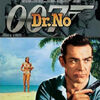 | «Доктор Ноу» | Dr. No | 1962 | Шон Коннери | Теренс Янг | $1,1 млн.[1] | $59,6 млн.[1] |
| 2 | 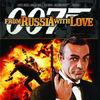 | «Из России с любовью» | From Russia with Love | 1963 | Шон Коннери | Теренс Янг | $2 млн.[2] | $54,1 млн.[2] |
| 3 | 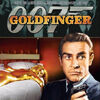 | «Голдфингер» | Goldfinger | 1964 | Шон Коннери | Гай Хэмилтон | $3 млн.[3] | $124,9 млн.[3] |
| 4 | 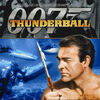 | «Шаровая молния» | Thunderball | 1965 | Шон Коннери | Теренс Янг | $9 млн.[4] | $141,2 млн.[4] |
| 5 | 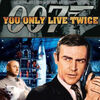 | «Живёшь только дважды» | You Only Live Twice | 1967 | Шон Коннери | Льюис Гилберт | $9,5 млн.[5] | $111,6 млн.[5] |
| 6 | 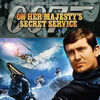 | «На секретной службе Её Величества» | On Her Majesty’s Secret Service | 1969 | Джордж Лэзенби | Питер Р. Хант | $7 млн.[6] | $87,4 млн.[6] |
| 7 | 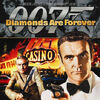 | «Бриллианты навсегда» | Diamonds Are Forever | 1971 | Шон Коннери | Гай Хэмилтон | $7,2 млн.[7] | $116 млн.[7] |
| 8 | 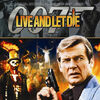 | «Живи и дай умереть» | Live and Let Die | 1973 | Роджер Мур | Гай Хэмилтон | $7 млн.[8] | $126,3 млн.[8] |
| 9 | 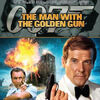 | «Человек с золотым пистолетом» | The Man with the Golden Gun | 1974 | Роджер Мур | Гай Хэмилтон | $13 млн.[9] | $97,6 млн.[9] |
| 10 | 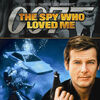 | «Шпион, который меня любил» | The Spy Who Loved Me | 1977 | Роджер Мур | Льюис Гилберт | $14 млн.[10] | $185,4 млн.[10] |
| 11 | 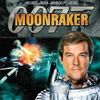 | «Лунный гонщик» | Moonraker | 1979 | Роджер Мур | Льюис Гилберт | $34 млн.[11] | $210,3 млн.[11] |
| 12 |  | «Только для твоих глаз» | For Your Eyes Only | 1981 | Роджер Мур | Джон Глен | $28 млн.[12] | $194,9 млн.[12] |
| 13 | 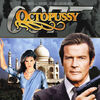 | «Осьминожка» | Octopussy | 1983 | Роджер Мур | Джон Глен | $27,5 млн.[13] | $187,5 млн.[13] |
| 14 | 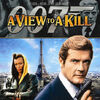 | «Вид на убийство» | A View to a Kill | 1985 | Роджер Мур | Джон Глен | $30 млн.[14] | $152,6 млн.[14] |
| 15 | 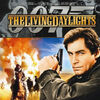 | «Искры из глаз» | The Living Daylights | 1987 | Тимоти Далтон | Джон Глен | $30 млн.[15] | $191,2 млн.[15] |
| 16 | 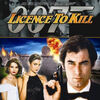 | «Лицензия на убийство» | Licence to Kill | 1989 | Тимоти Далтон | Джон Глен | $32 млн.[16] | $156,2 млн.[16] |
| 17 | 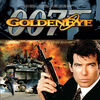 | «Золотой глаз» | Golden Eye | 1995 | Пирс Броснан | Мартин Кэмпбелл | $60 млн.[17] | $352,1 млн.[17] |
| 18 | 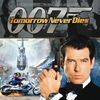 | «Завтра не умрёт никогда» | Tomorrow Never Dies | 1997 | Пирс Броснан | Роджер Споттисвуд | $110 млн.[18] | $210 млн.[18] |
| 19 | 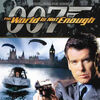 | «И целого мира мало» | The World Is Not Enough | 1999 | Пирс Броснан | Майкл Эптед | $135 млн.[19] | $361,8 млн.[19] |
| 20 | 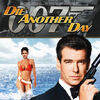 | «Умри, но не сейчас» | Die Another Day | 2002 | Пирс Броснан | Ли Тамахори | $142 млн.[20] | $431,9 млн.[20] |
| 21 | 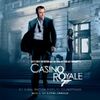 | «Казино „Рояль“» | Casino Royale | 2006 | Дэниел Крейг | Мартин Кэмпбелл | $150 млн.[21] | $599 млн.[21] |
| 22 | 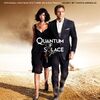 | «Квант милосердия» | Quantum of Solace | 2008 | Дэниел Крэйг | Марк Форстер | $200 млн.[22] | $586 млн.[22] |
| 23 | 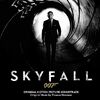 | «007: Координаты „Скайфолл“» | Skyfall | 2012 | Дэниел Крэйг | Сэм Мендес | $200 млн.[23] | $1,108 млрд.[23] |
| 24 | 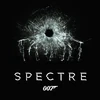 | «007: СПЕКТР» | Spectre | 2015 | Дэниел Крэйг | Сэм Мендес | $245 млн.[24] | $872,4 млн.[24] |
| 25 | | «007: Не время умирать» | «No time to die» | 2021 | Дэниел Крэйг | Кэри Фукунага | $250—301 млн | $250—301 млн |
| Номер | Фото | Русское название | Оригинальное название | Год | Джеймс Бонд | Режиссер | Бюджет | Касовые сборы |
| 1 | 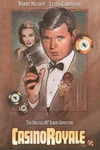 | Казино «Рояль» (1954) | Casino Royale | 1954 | Барри Нельсон | Уильям Браун-младший | $25 тыс.[25] | — |
| 2 |  | Казино «Рояль» (1967) | Casino Royale | 1967 | Дэвид Нивен | Джон Хьюстон и др. | $12 млн.[26] | $41,7 млн.[26] |
| 3 |  | Никогда не говори «никогда» | Never Say Never Again | 1983 | Шон Коннери | Ирвин Кершнер | $36 млн.[27] | $160 млн.[27] |
Примечания
- ↑ 1,0 1,1 Бюджет и сборы «Доктора Ноу» по данным IMDb.com
- ↑ 2,0 2,1 Бюджет и сборы «Из России с любовью» по данным IMDb.com
- ↑ 3,0 3,1 Бюджет и сборы «Голдфингера» по данным IMDb.com
- ↑ 4,0 4,1 Бюджет и сборы «Шаровой молнии» по данным IMDb.com
- ↑ 5,0 5,1 Бюджет и сборы «Живёшь только дважды» по данным IMDb.com
- ↑ 6,0 6,1 Бюджет и сборы «На секретной службе Её Величества» по данным IMDb.com
- ↑ 7,0 7,1 Бюджет и сборы «Бриллиантов навсегда» по данным IMDb.com
- ↑ 8,0 8,1 Бюджет и сборы «Живи и дай умереть» по данным IMDb.com
- ↑ 9,0 9,1 Бюджет и сборы «Человека с золотым пистолетом» по данным IMDb.com
- ↑ 10,0 10,1 Бюджет и сборы «Шпиона, который меня любил» по данным IMDb.com
- ↑ 11,0 11,1 Бюджет и сборы «Лунного гонщика» по данным IMDb.com
- ↑ 12,0 12,1 Бюджет и сборы «Только для твоих глаз» по данным IMDb.com
- ↑ 13,0 13,1 Бюджет и сборы «Осьминожки» по данным IMDb.com
- ↑ 14,0 14,1 Бюджет и сборы «Вида на убийство» по данным IMDb.com
- ↑ 15,0 15,1 Бюджет и сборы «Искр из глаз» по данным IMDb.com
- ↑ 16,0 16,1 Бюджет и сборы «Лицензии на убийство» по данным IMDb.com
- ↑ 17,0 17,1 Бюджет и сборы «Золотого глаза» по данным IMDb.com
- ↑ 18,0 18,1 Бюджет и сборы «Завтра не умрёт никогда» по данным IMDb.com
- ↑ 19,0 19,1 Бюджет и сборы «И целого мира мало» по данным IMDb.com
- ↑ 20,0 20,1 Бюджет и сборы «Умри, но не сейчас» по данным IMDb.com
- ↑ 21,0 21,1 Бюджет и сборы «Казино „Рояль“» по данным IMDb.com
- ↑ 22,0 22,1 Бюджет и сборы «Кванта милосердия» по данным IMDb.com
- ↑ 23,0 23,1 Бюджет и сборы «007: Координаты „Скайфолл“» по данным IMDb.com
- ↑ 24,0 24,1 Бюджет и сборы «007: СПЕКТР» по данным IMDb.com
- ↑ Коммерсантъ: Семёрка бьёт всех
- ↑ 26,0 26,1 Бюджет и сборы «Казино „Рояль“» (1967) по данным IMDb.com
- ↑ 27,0 27,1 Бюджет и сборы «Никогда не говори „никогда“» по данным IMDb.com

